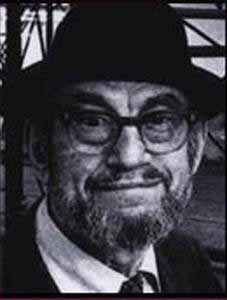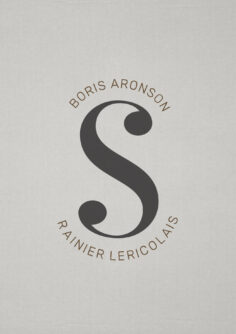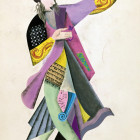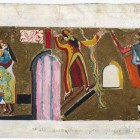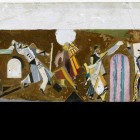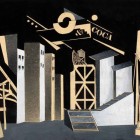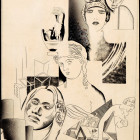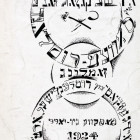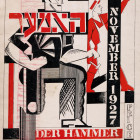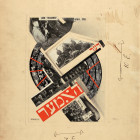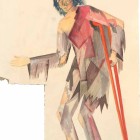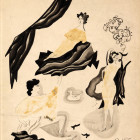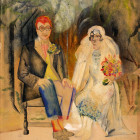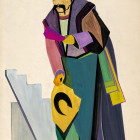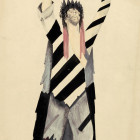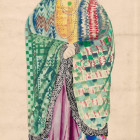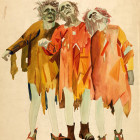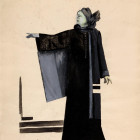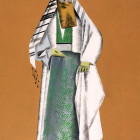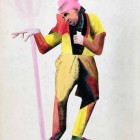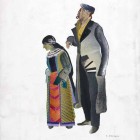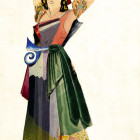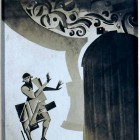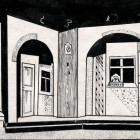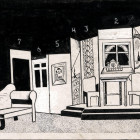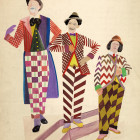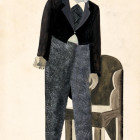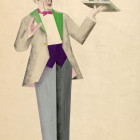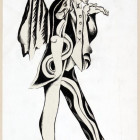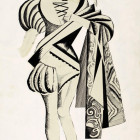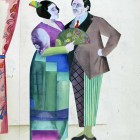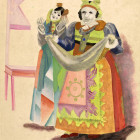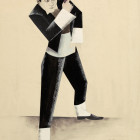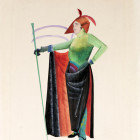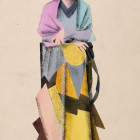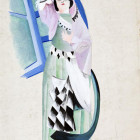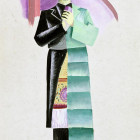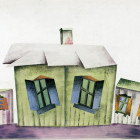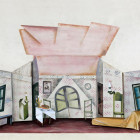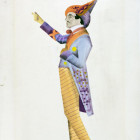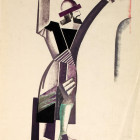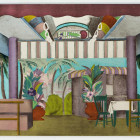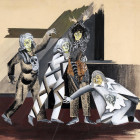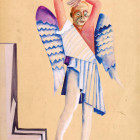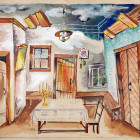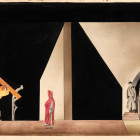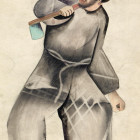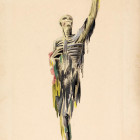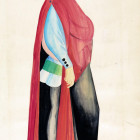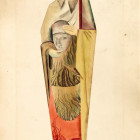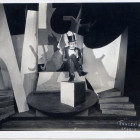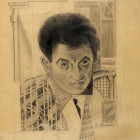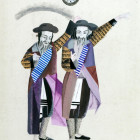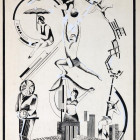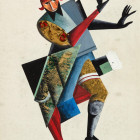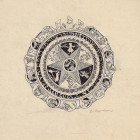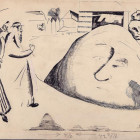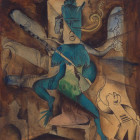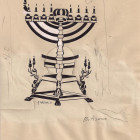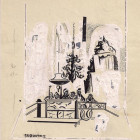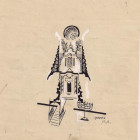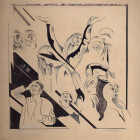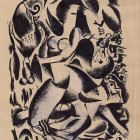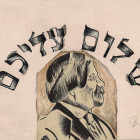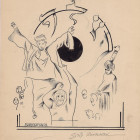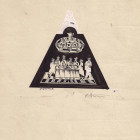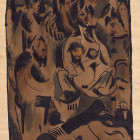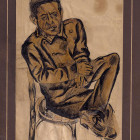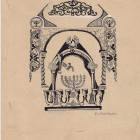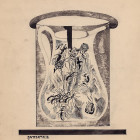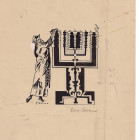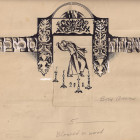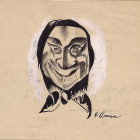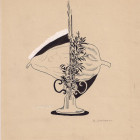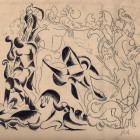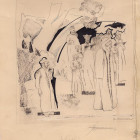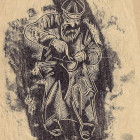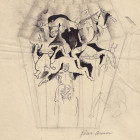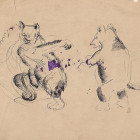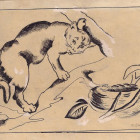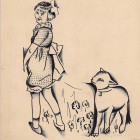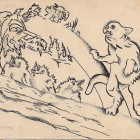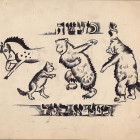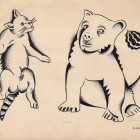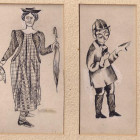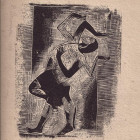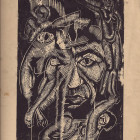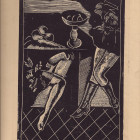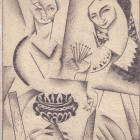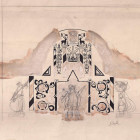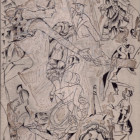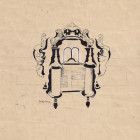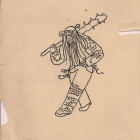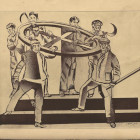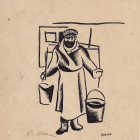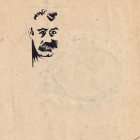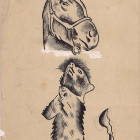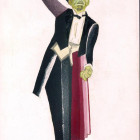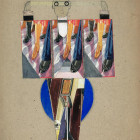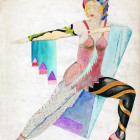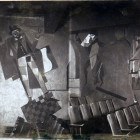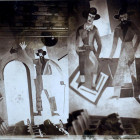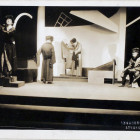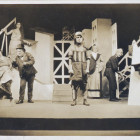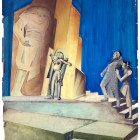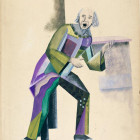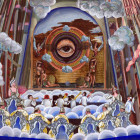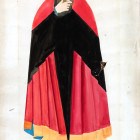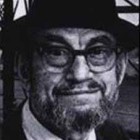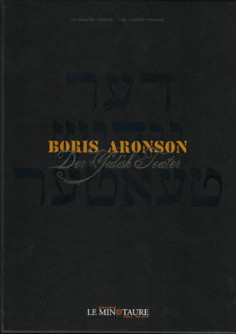-
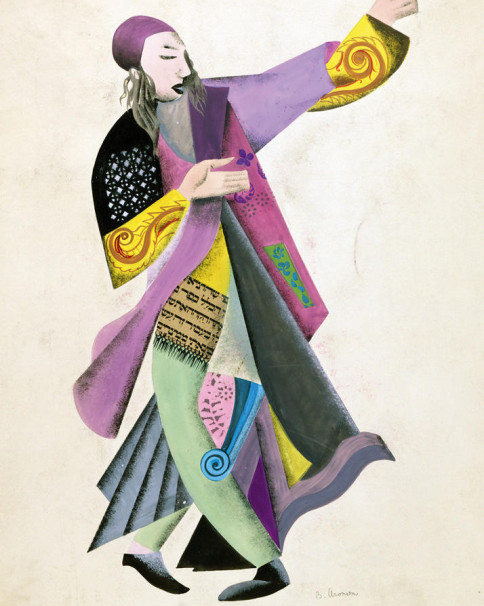
Oriental dance, 1922 Gouache and collage on paper24,8 x 20,9 in
-
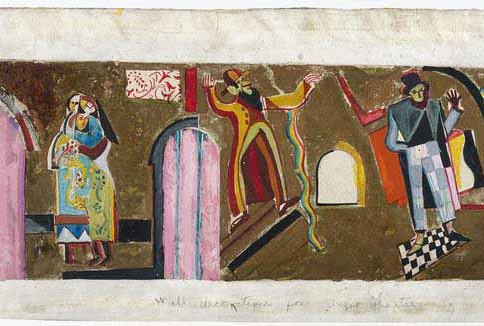
Draft for the mural painting- Undzer Teater,1925Gouache, pencil and gold leaf on card 6.5 x 20.7 in
-

Draft for the mural painting- Undzer Teater,1925 Gouache, pencil and gold leaf on card 6.5 x 20.7 in
-
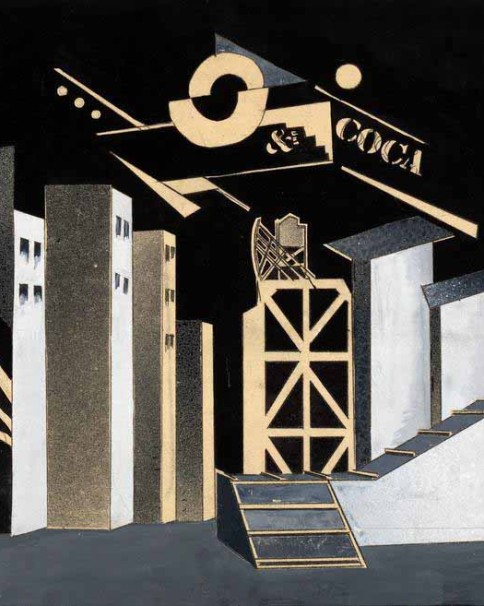
Study for final balance – stage project,1925 India ink and gouache on cardboard 5.4 x 7.3 in
-
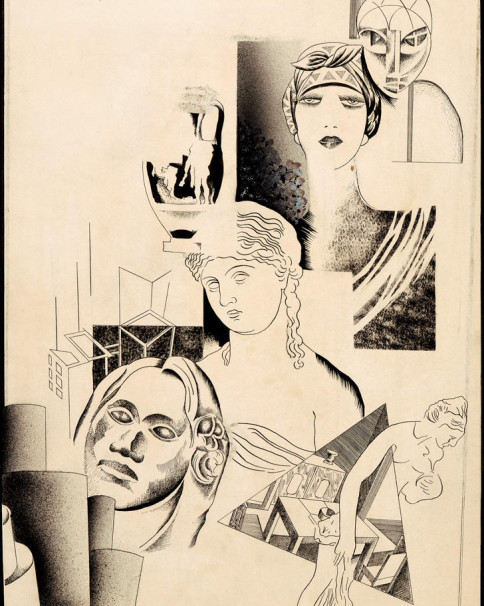
Untitled, C. 1920 Watercolor and india ink on paper 25 x 19 in
-
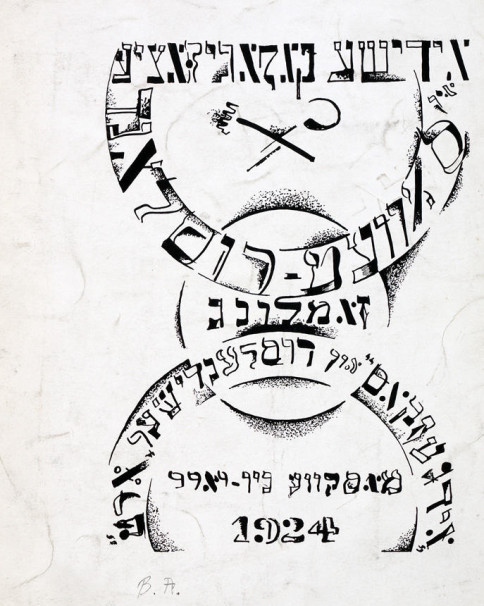
Study for the Yiddish frontcover , 1924 Ink on paper 10 x 6.9 in
-
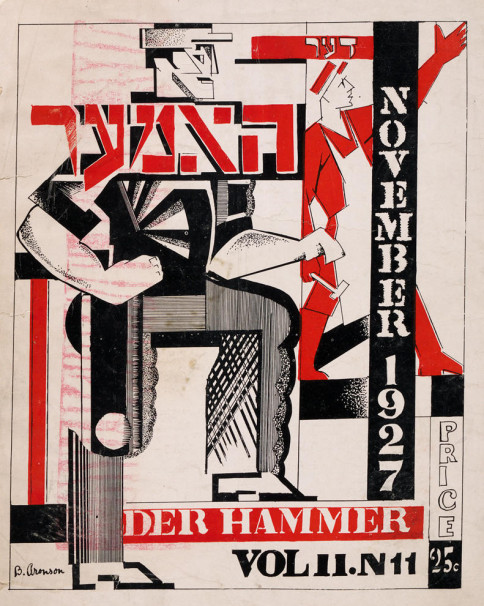
Study for the frontcover of « der Hammer » (Le Marteau), 1926 Ink and collage on cardboard 20 x 14.8 in
-
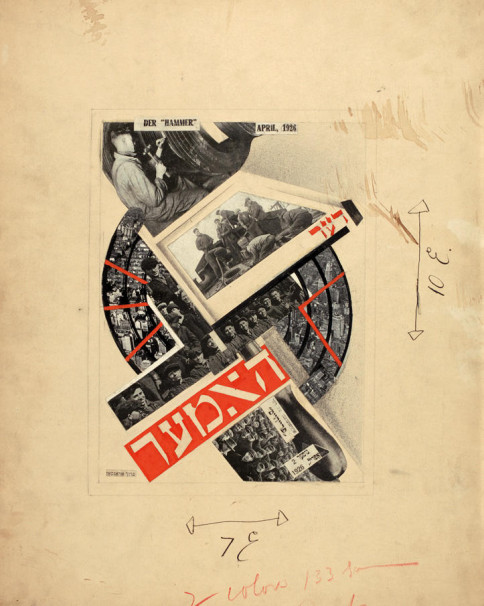
Study for « der Hammer » (Le Marteau), 1926 Ink and collage on cardboard 20 x 14.8 in
-
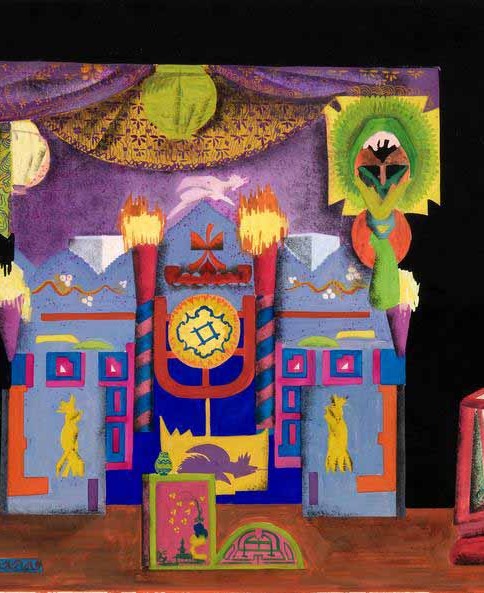
Stage set - summer theatre, C.1921 Gouache on cardboard 16 x 27.3 in
-
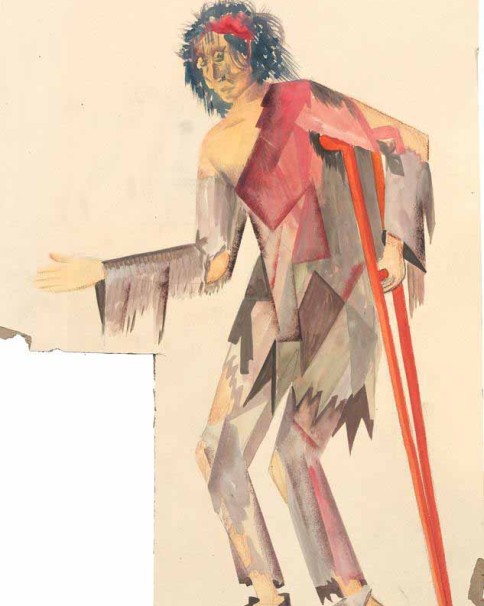
Study for a costume, 1920 Gouache and pencil on cardboard 16.1 x 10 inches
-
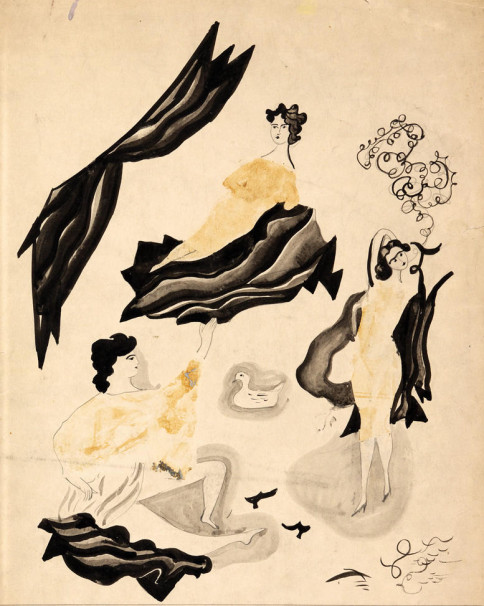
Illustration project, C. 1920 Watercolour, indian ink and pencil on paper 17 x 11.9 in
-
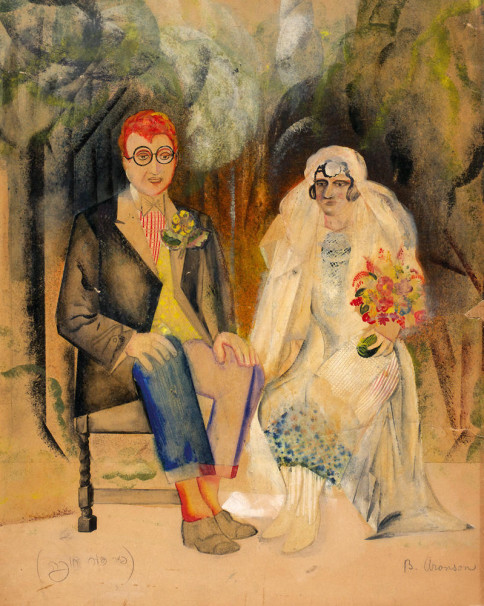
Study for a costume – married couple - For the Hupa, 1920 Gouache on cardboard 18.3 x 15 in
-
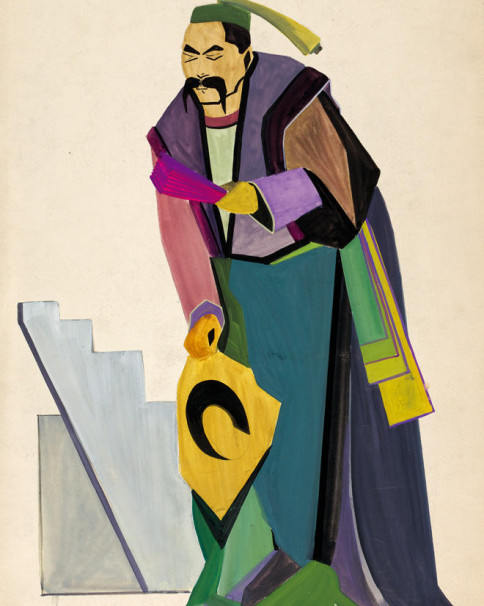
Study for a costume-danse chinoise1920 Gouache on paper 19.3 x 12.8 inches
-
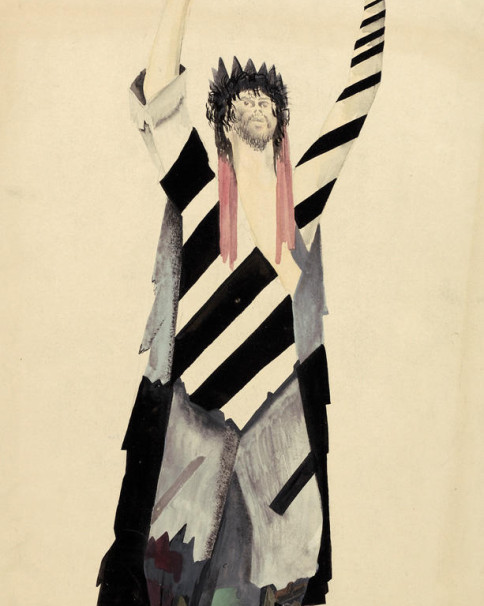
Study for a costume - Man with talit, 1920 Gouache and pencil on cardboard 48,5 x 36 cm
-
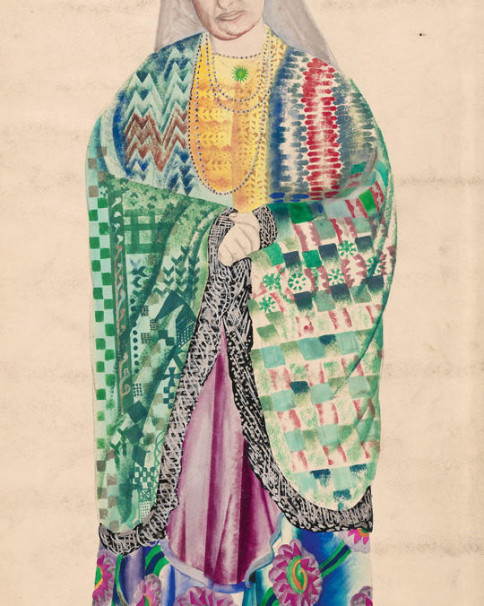
Study for a costume - jewish woman, 1920 Gouache and pencil on paper 20.7 x 10.9 in
-
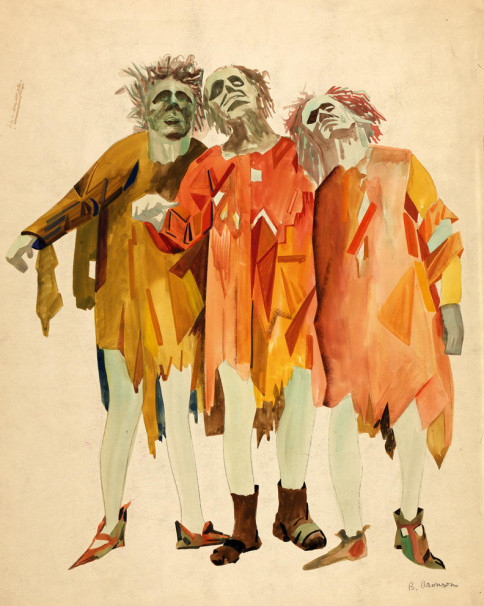
Study for a costume, C.1930 Gouache and pencil on paper 21 x 17 in
-
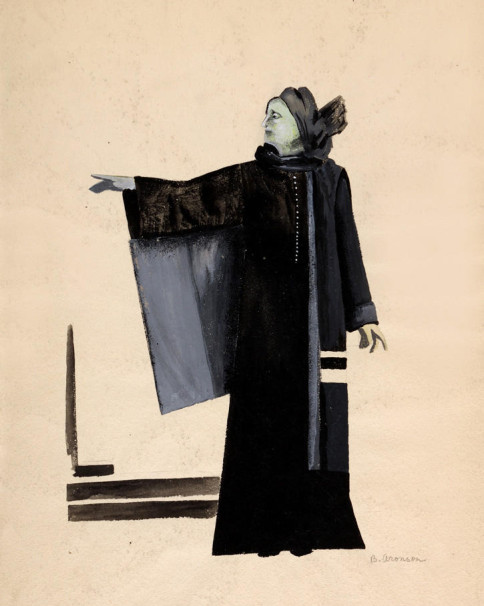
Study for a costume - Woman in black, 1920 Gouache and pencil on paper 22 x 15 in
-
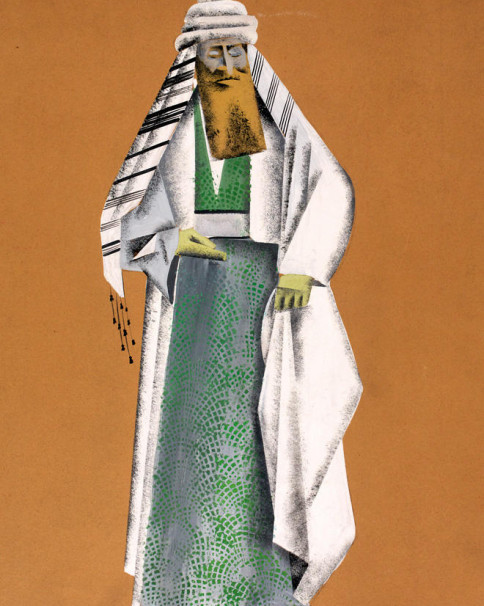
Study for a costume, 1925 Gouache and pencil on paper 22 x 18.9 in
-
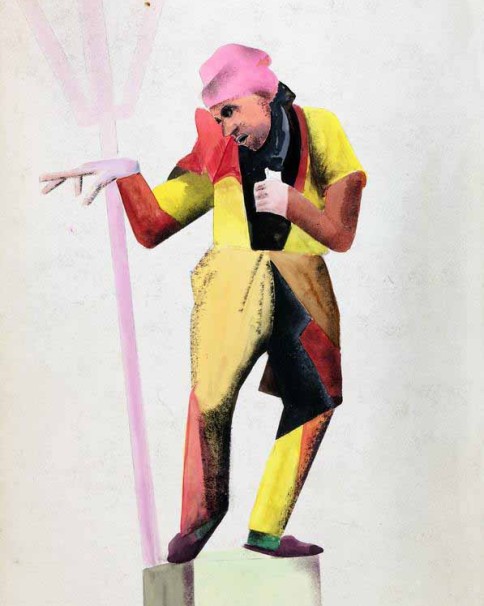
Study for a costume-day and night, 1924 Pencil and gouache on paper 15.7 x 9.2 in
-
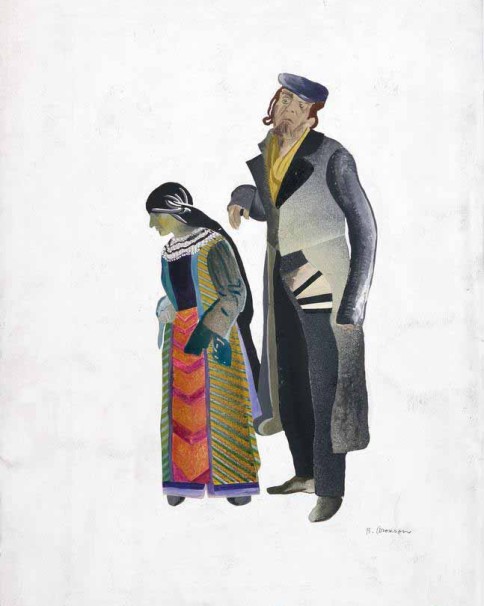
Study for a costume-day and night, 1924 Gouache on cardboard 21.8 x 14 in
-
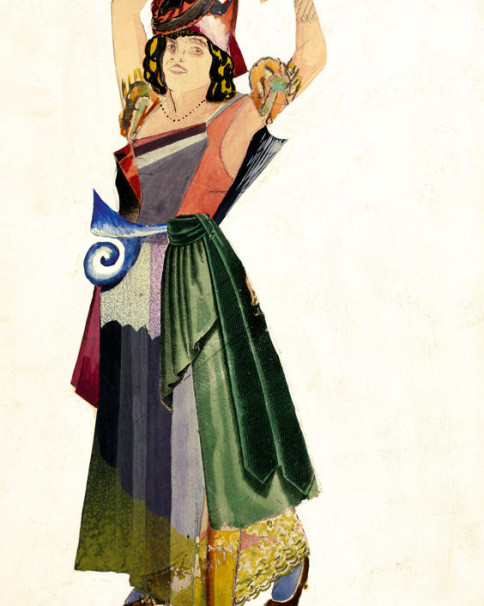
Study for a costume-day and night, 1924 Gouache on cardboard 21.8 x 14 in
-
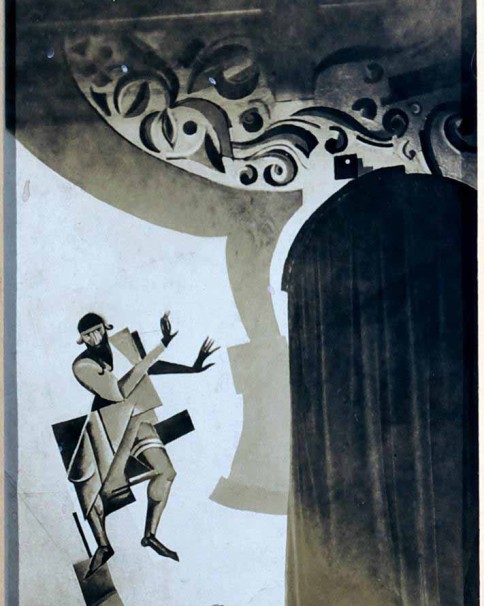
Photo des peintures murales,1925 Tirage gélatino-argentique d’époque 16,5 x 21,5 cm
-
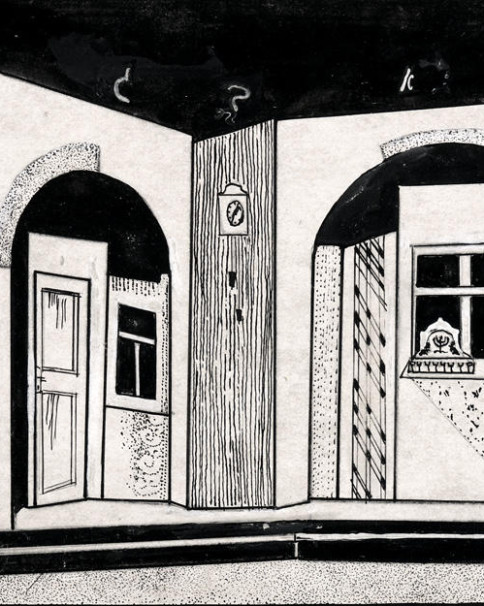
Study for Hanukkah Gelt – stage project, 1925 Indian ink on cardboard 5.4 x 7.3 in
-
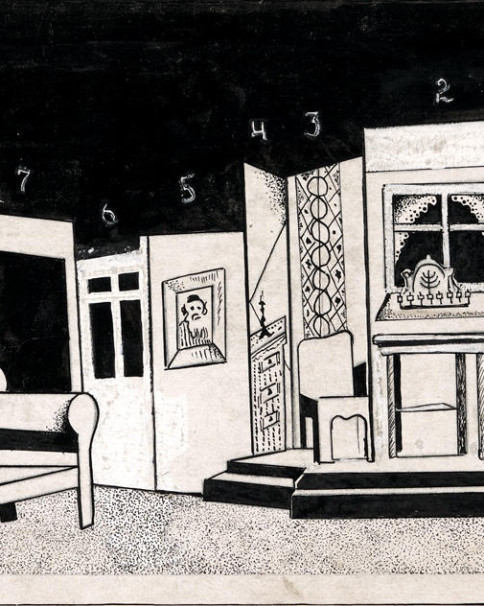
Study for Hanukkah Gelt – stage project, 1925 Indian ink on cardboard 5.4 x 7.3 in
-
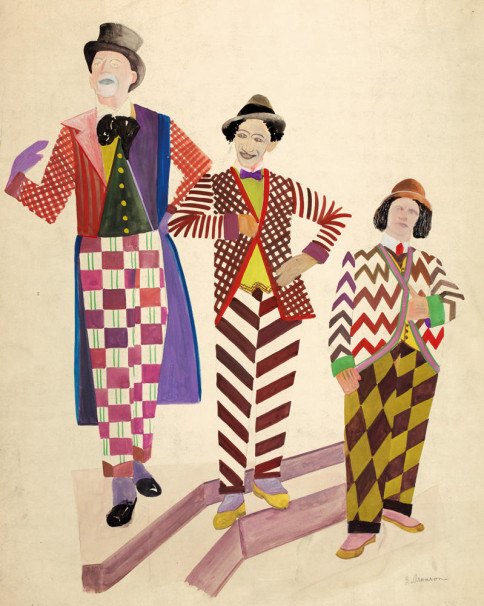
Study for a costume - "L'équilibre finale" - Final balance, 1925 Gouache and pencil on paper 22 x 18.9 in
-

Study for a costume - Final balance, 1925 Gouache on paper 15.5 x 9 in
-
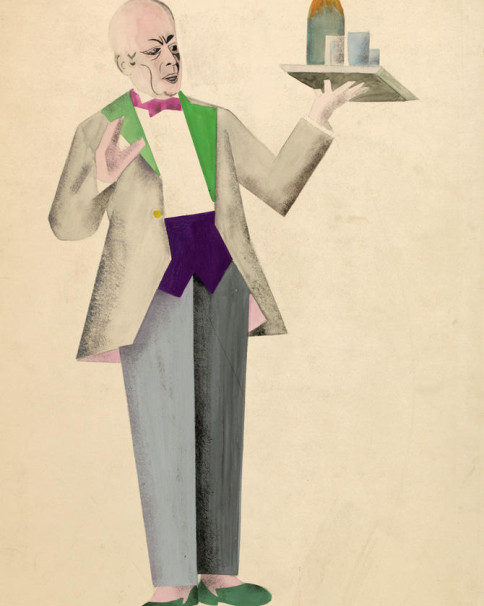
Study for a costume - The tenth commandment, 1926 Gouache on paper 22.2 x 19.9 in
-
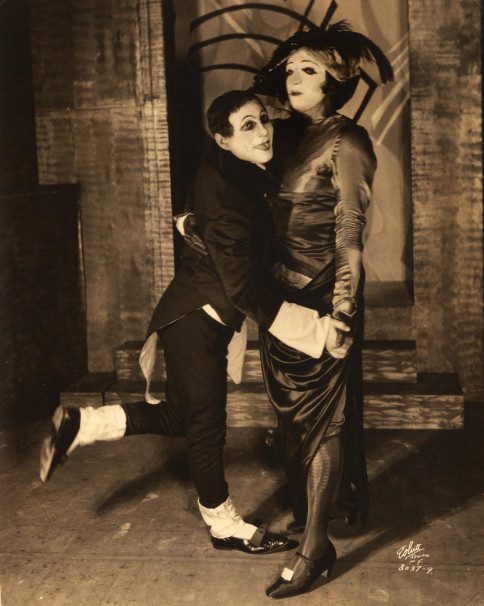
Photo from "The tenth commandment", 1926 Silver film print13.2 x 10.2 in
-
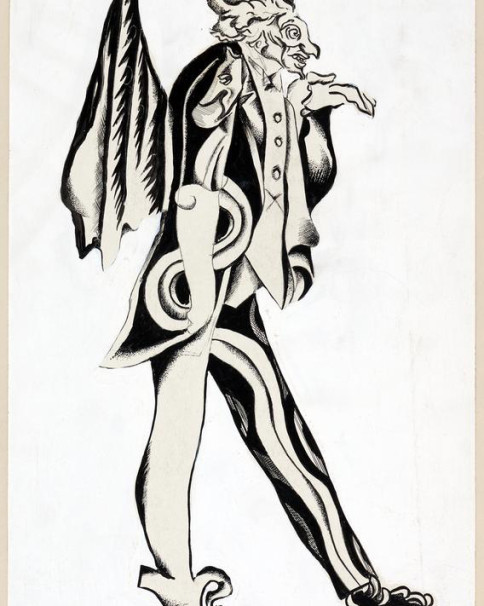
Study for a costume - "The tenth commandment", 1920 Gouache and pencil on paper 22 x 15 in
-
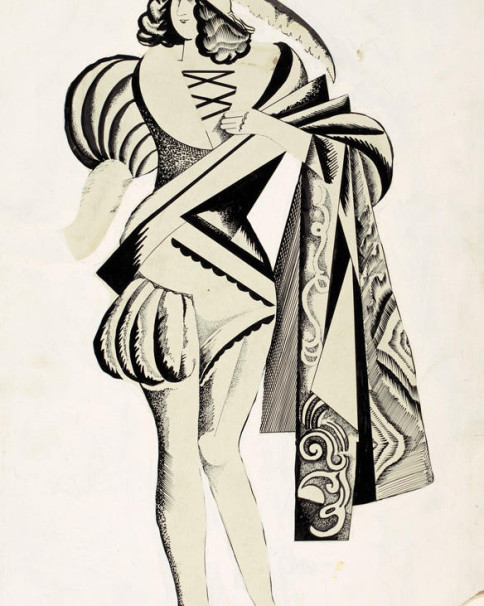
Study for a costume - "The tenth commandment", 1920 Gouache and pencil on paper 22 x 15 in
-
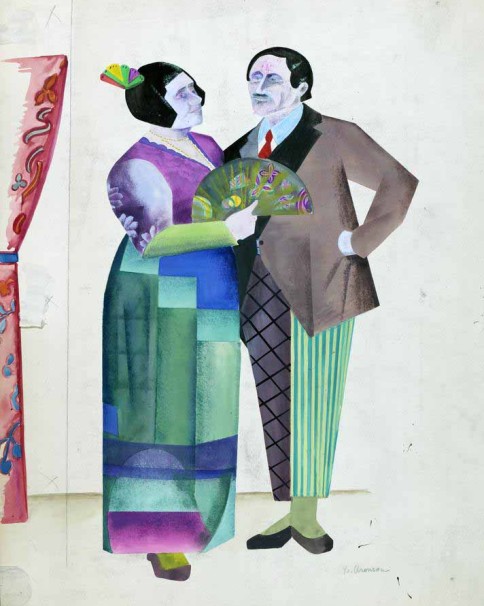
Study for a costume - The Tenth Commandment, 1926 Gouache on paper 22.7 x 18 in
-
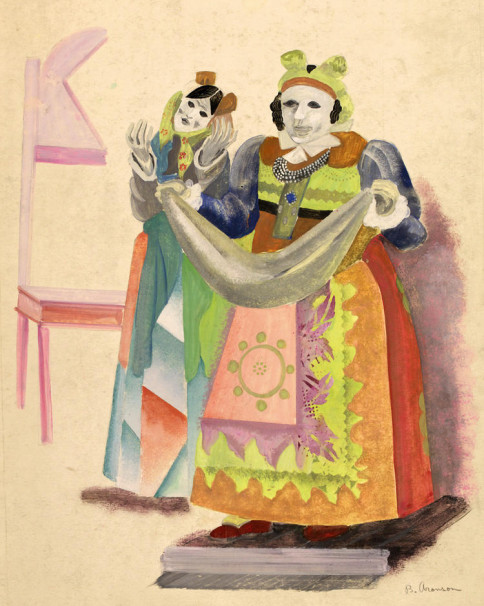
Study for a costume - The Tenth Commandment, 1926 Gouache on card 66,5 x 52 cm
-
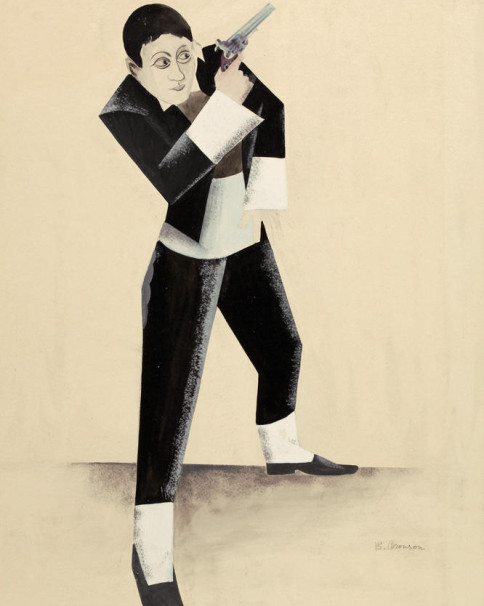
Etude pour un costume - The tenth commandment,1926 Gouache et crayon sur papier 68,5 x 48,5 cm
-
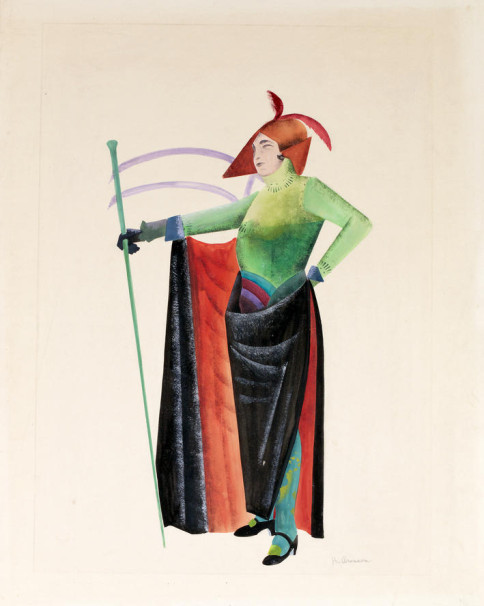
Study for a costume - The tenth commandment, 1926 Gouache and pencil on paper 28 x 19.3 in
-
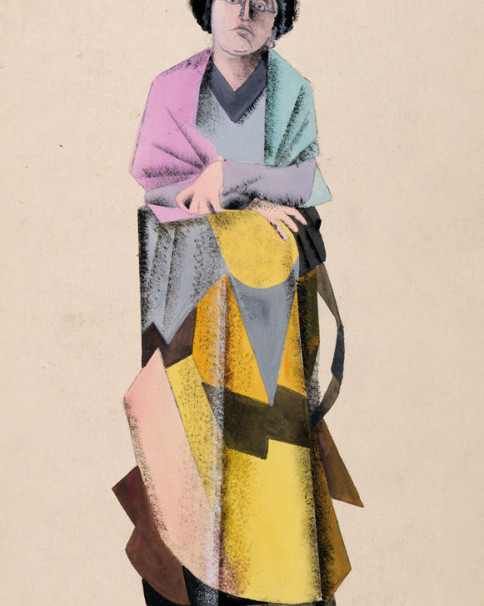
Study for a costume - The tenth commandment, 1926 Gouache on card 17.7 x 12.8 in
-
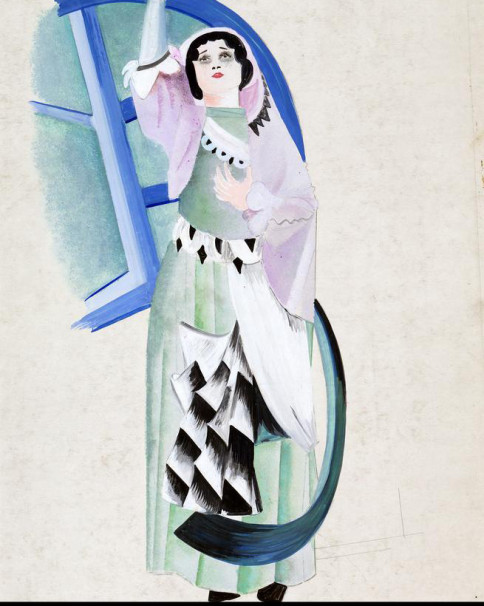
Study for a costume - The tenth commandment, 1926 Gouache on paper 21.2 x 14 in
-
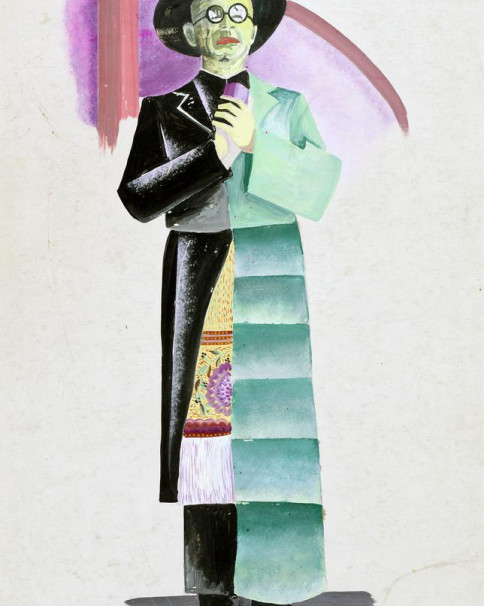
Study for a costume - The tenth commandment, 1926 Gouache on paper 21.2 x 14 in
-
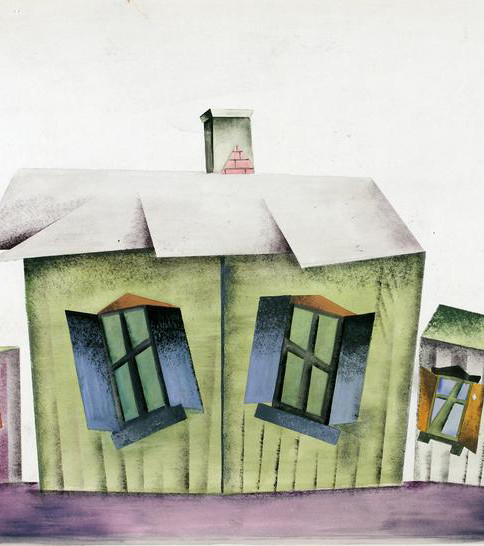
Stage set - The tenth commandment, 1926 Gouache on paper 15.7 x 28.1 in
-
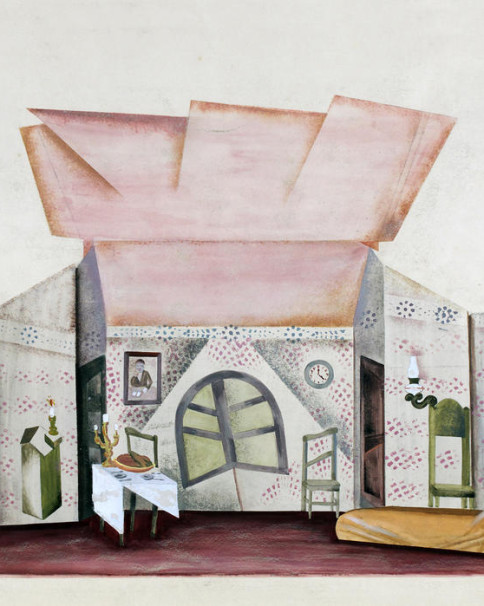
Stage set - The tenth commandment, 1926 Gouache on paper 15.7 x 28.1 in
-
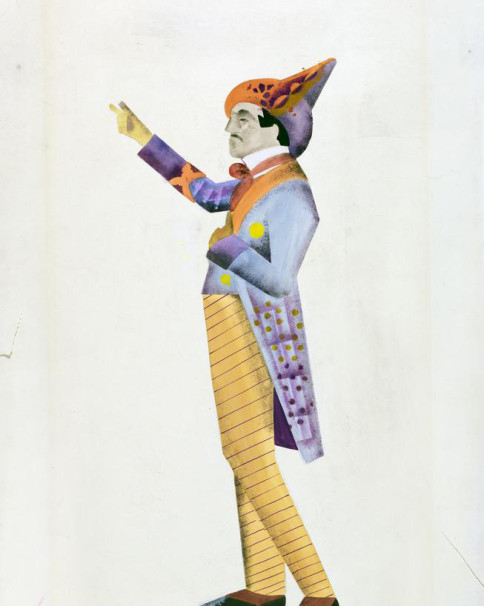
Study for a costume - The tenth commandment, 1926 Gouache on paper 28 x 18 in
-
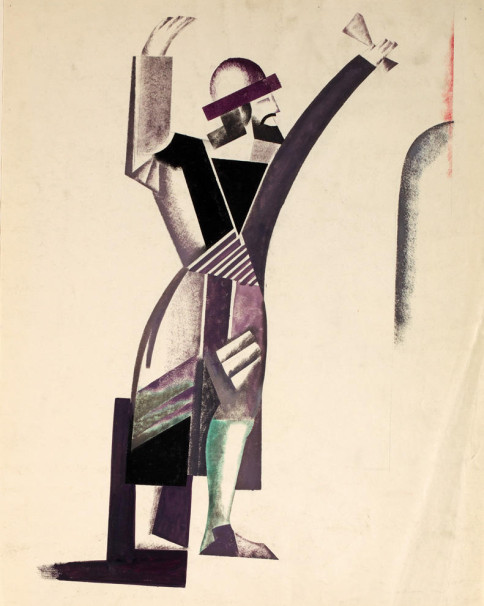
Project for the mural painting in Unzer Theater, 1925 Gouache on paper 20 x 15.5 inches
-
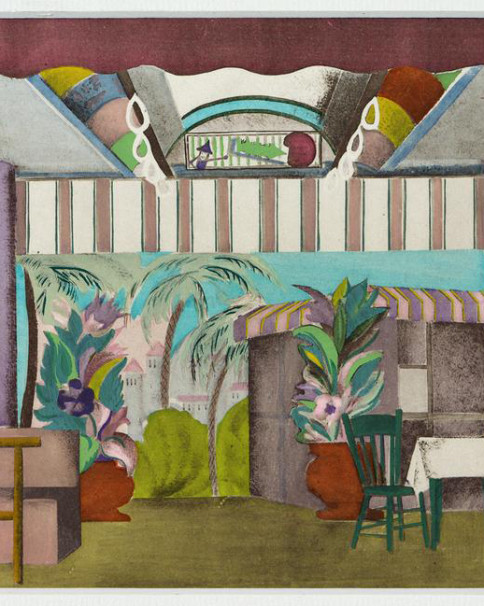
Décor de scène - Bronx Express,1925 Gouache sur carton 18 x 25,5 cm
-
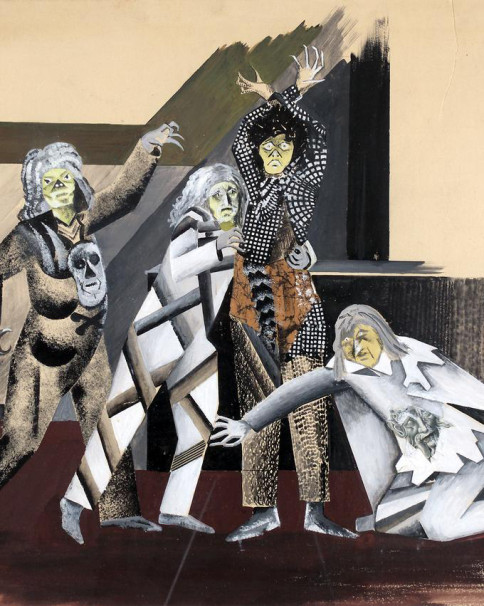
Study for a costume - Tragedy of Nothing – Stage project, 1927 Gouache on card 17.3 x 20.1 in
-
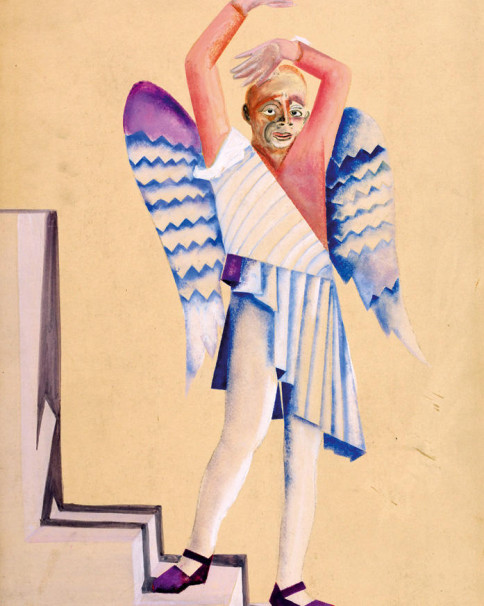
Study for a costume - Final balance, 1926 Gouache on card 20 x 14.9 in
-
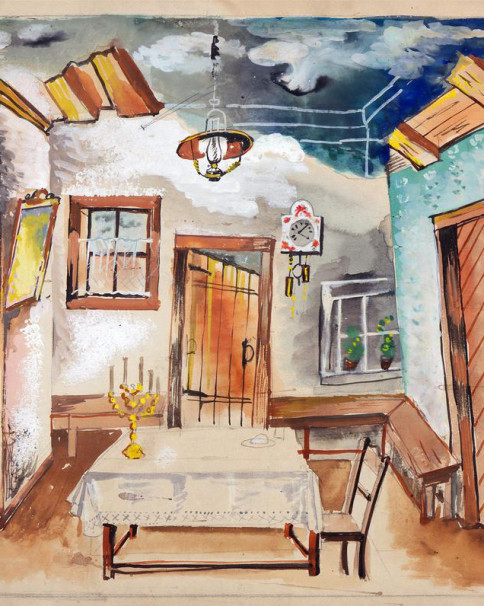
Stage set - Stempenyu the Fiddler- The Violoniste, 1929 Gouache and pencil on card 13.2 x 16.7 in
-
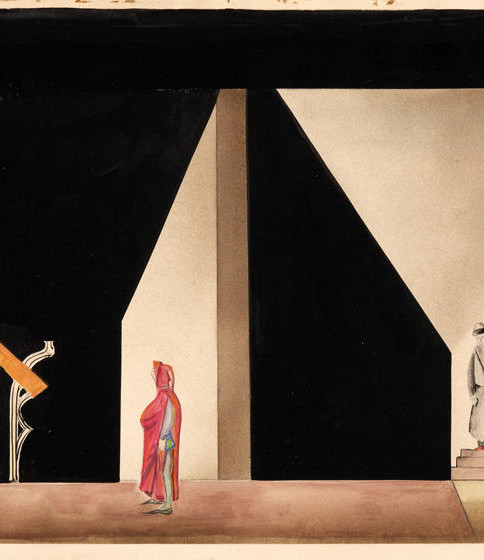
Stage set – Golem, 1931 Gouache and pencil on paper 14.2 x 22 in
-
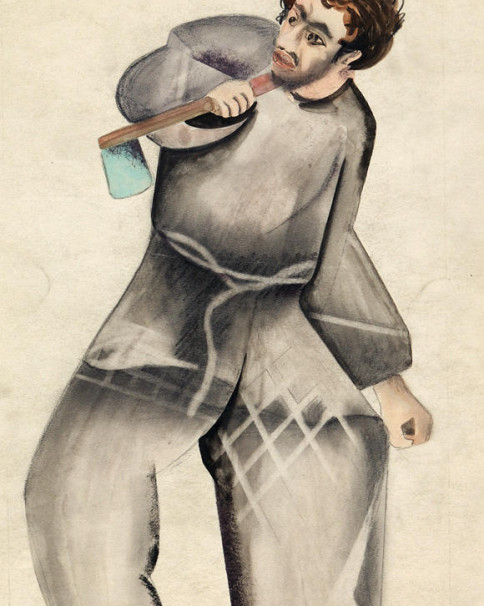
Study for a costume – Golem, 1931 Gouache and pencil on card 16.9 x 9.8 in
-
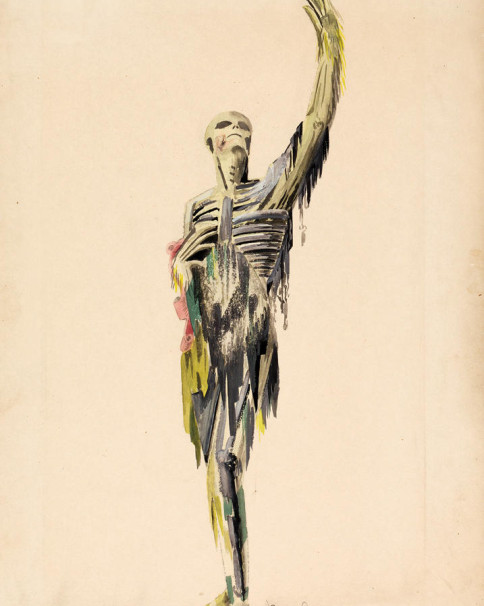
Study for a costume – Golem, 1929 Gouache and pencil on card 19.7 x 14.4 in
-
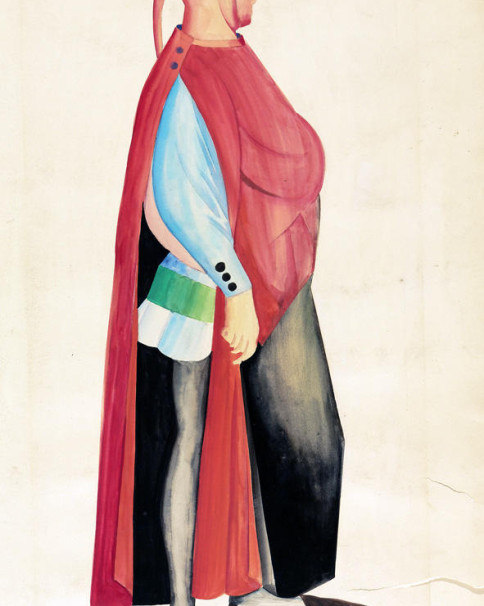
Study for a costume – Golem, 1931 Gouache and pencil on paper 22 x 14.2 in
-
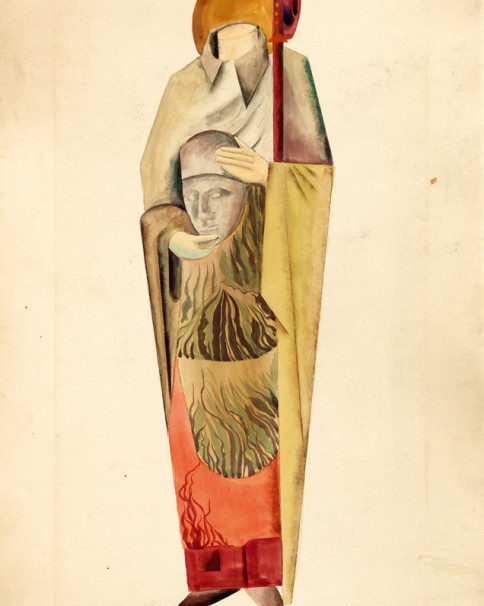
Study for a costume – Golem, 1929 Gouache and pencil on card 19.7 x 9.7 in
-
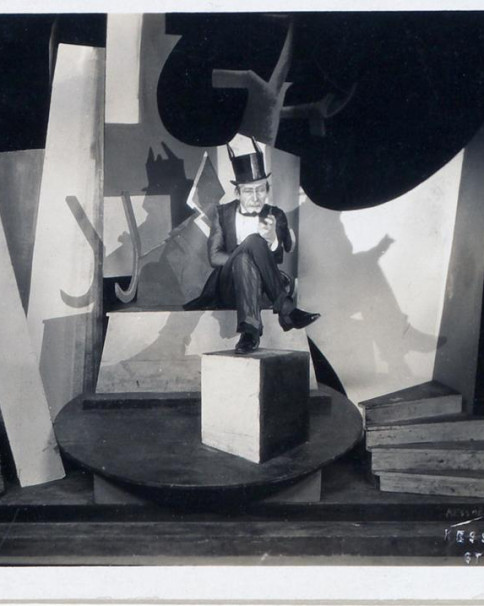
Photo de la piece - day and night,1924 Tirage gélatino-argentique de l'époque 12,5 x 17,7, 13,8 x 18 cm
-
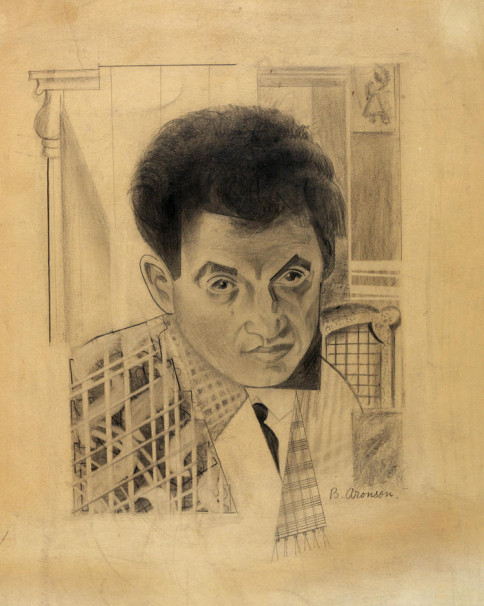
Self portrait, C. 1920 Pencil on paper 14.2 x 11 in
-
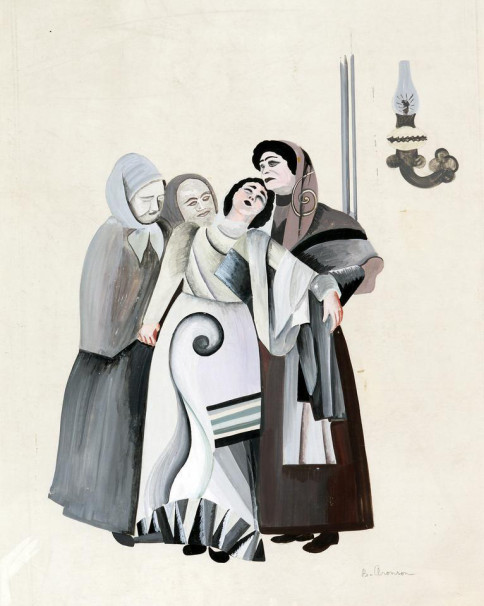
Final balance, 1926 Gouache and pencil on card 20 x 14.9 in
-
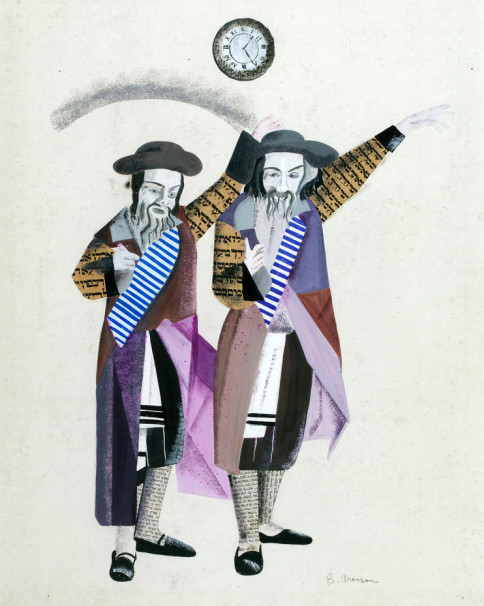
Project for the costumes of "Le Dixième Commendement - Two Hassidiques", 1926 Gouache and collage on paper 24 x 18 in
-
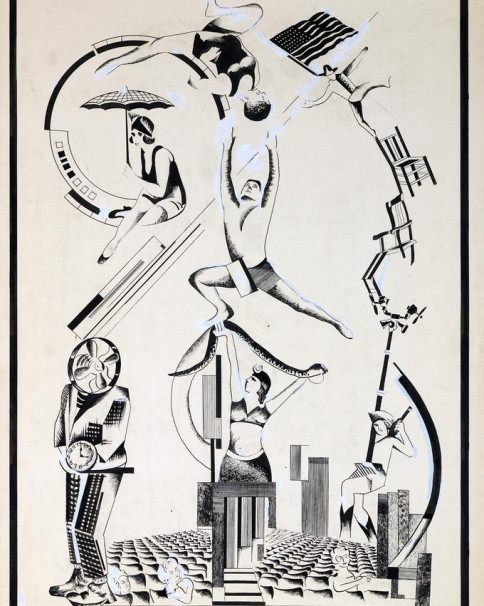
Project for the circus – Project for "the Highway of Life", 1920 Ink and gouache on paper 20 x 14 in
-
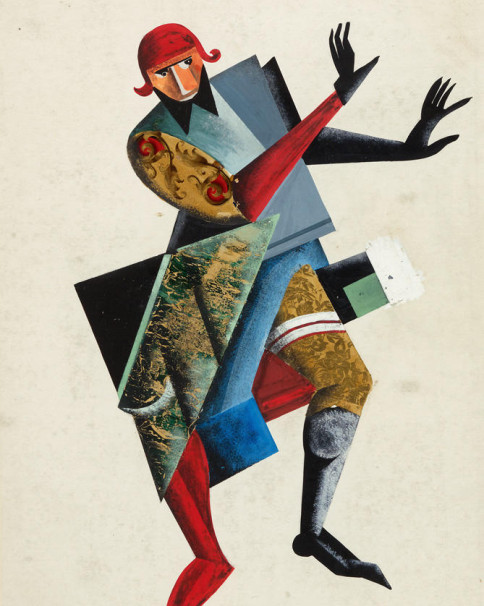
Project for the mural painting in Unzer Teater, 1925 Gouache and gold leaf on paper 24 x 16 inches
-
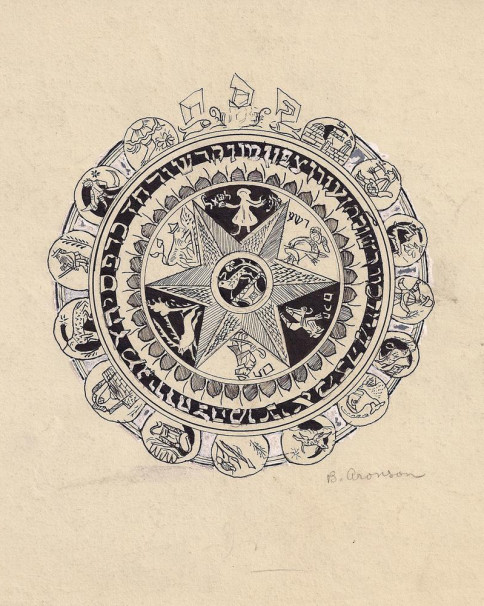
Untitled, 1917-1919 Indian ink on paper 7 x 7 in
-
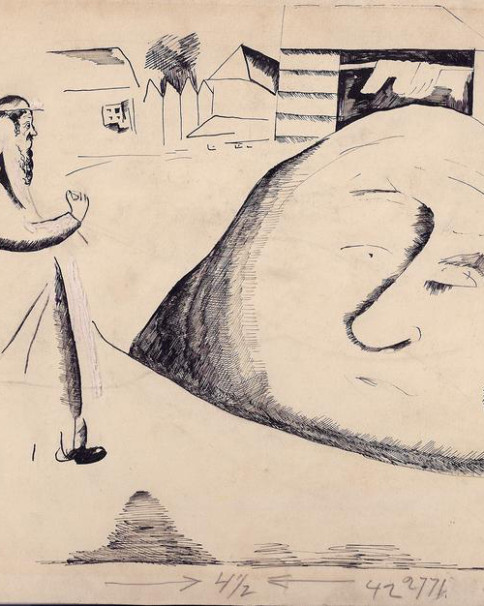
Untitled, C. 1917-1919 Indian ink on paper 7 x 11.2 in
-
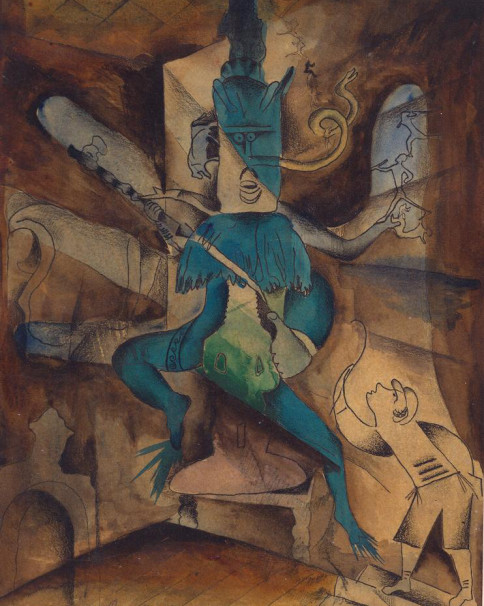
"Dybbouk", 1917-1919 Indian ink, pencil and watercolour on card 10.7 x 8 in
-

Untitled, C. 1917-1919 Indian ink, gouache and lead pencil on paper glued to tracing paper 9 x 6.1 in
-
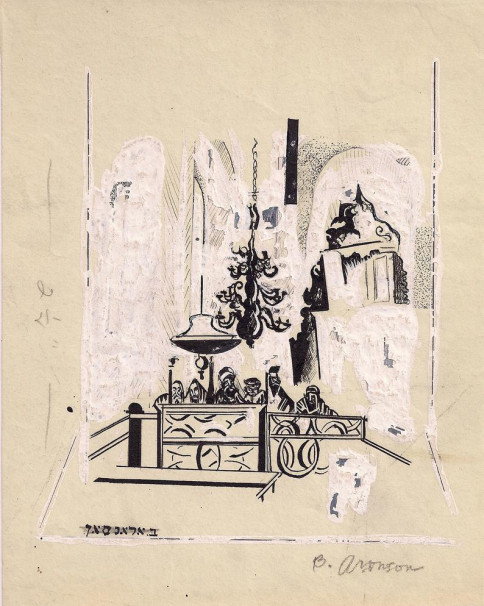
C. 1917-1919 Encre de chine et gouache sur papier 18.5 x 14.5 cm
-
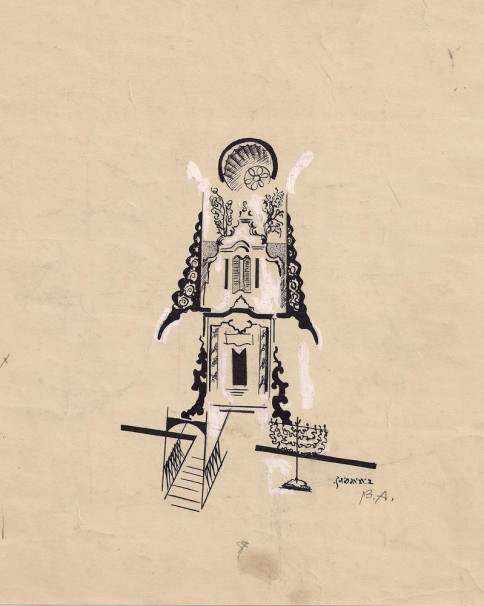
Sans titre, 1917-1919 Encre de chine et gouache sur papier 22,5 x 19 cm (feuille)
-
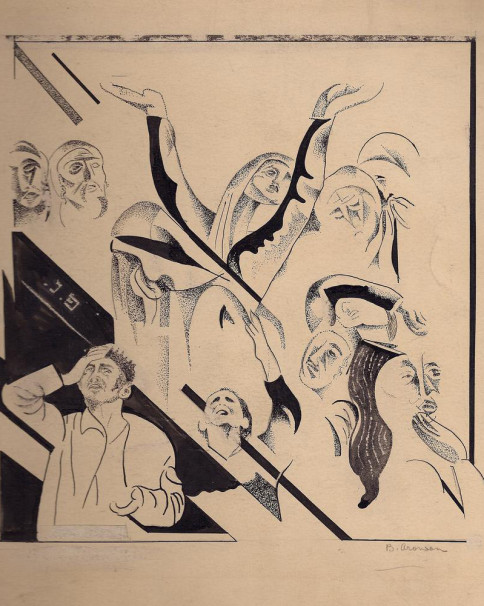
Sans titre,1917-1919Encre de chine sur papier 23,4 x 24,2 cm
-
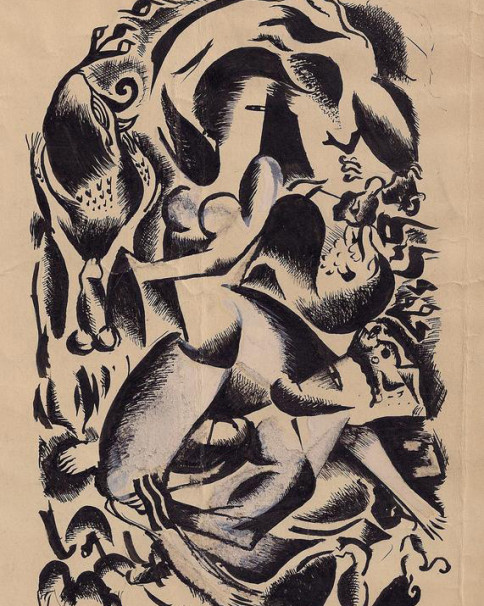
Sans titreC. 1917-1919 Encre de chine et gouache sur papier 25,9 x 15,9 cm
-
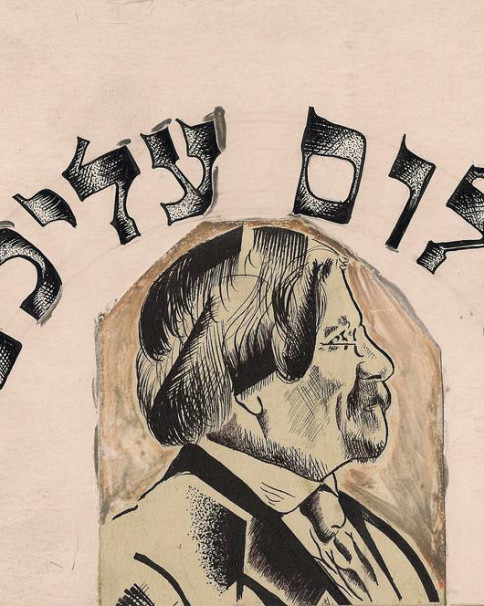
Untitled, 1917-1919 Indian ink, ink wash and gouache on paper 6.7 x 11 in
-
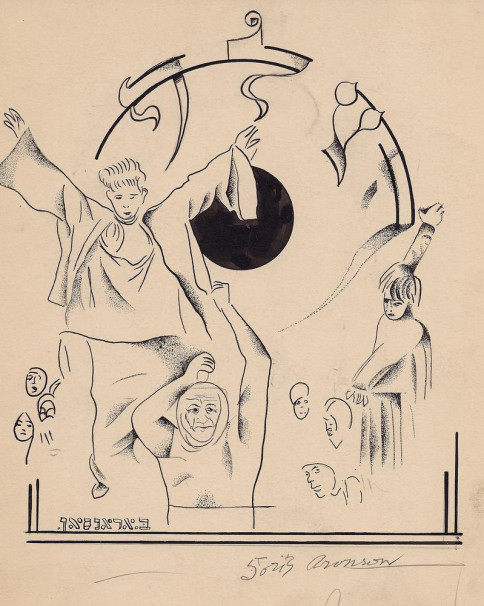
Sans titreC.1917-1919 Encre de chine sur papier 18.4 x 18.4 cm
-
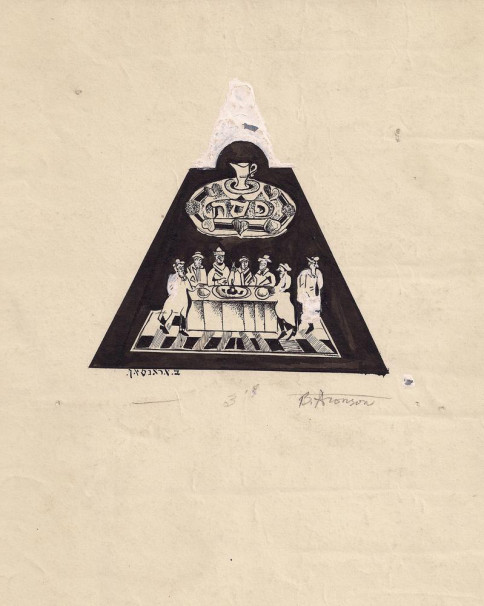
Sans titre, 1917-1919 Encre de chine et gouache sur papier 24.5 x 21.6 cm
-
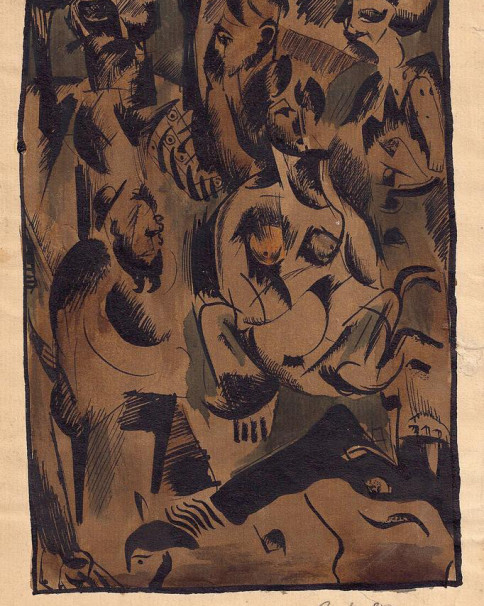
1917-1919 Encre de chine, lavis d’encre et gouache sur papier ingres 21.9 x 13.7 cm
-
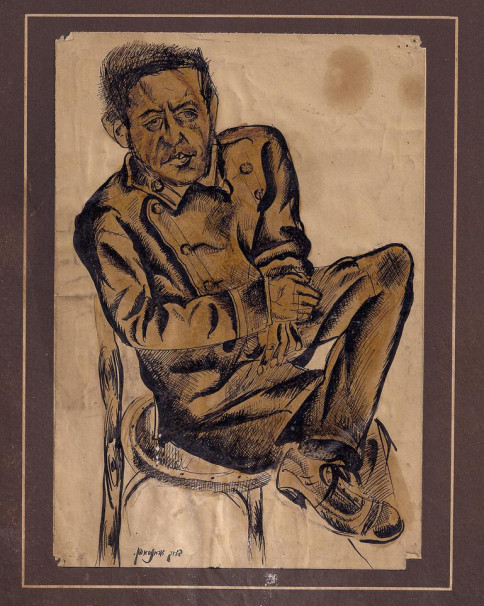
Sans titre, 1917-1919 Encre de chine, et fixatif sur papier collé sur carton 18,8 x 12,9 cm (motif), 24,6 x 19 cm (carton)
-
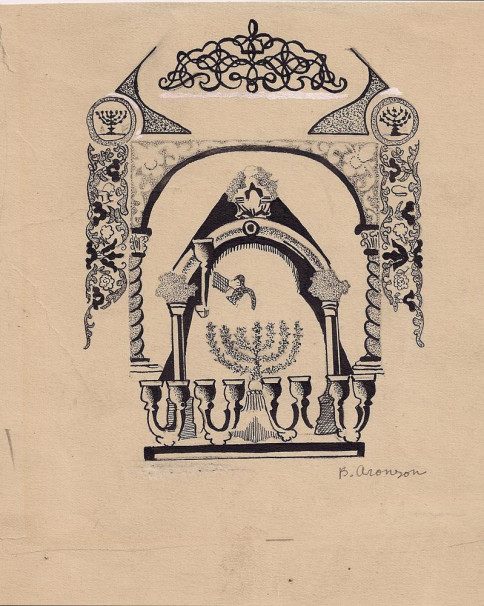
Sans titre, 1917-1919 Encre de chine et gouache sur papier 14.5 x 13.4 cm
-
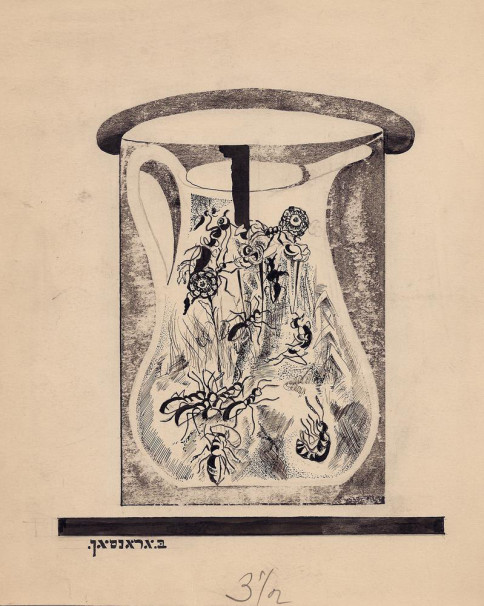
Sans titre, 1917-1919 Encre de chine et gouache sur papier 22 x 18.2 cm
-
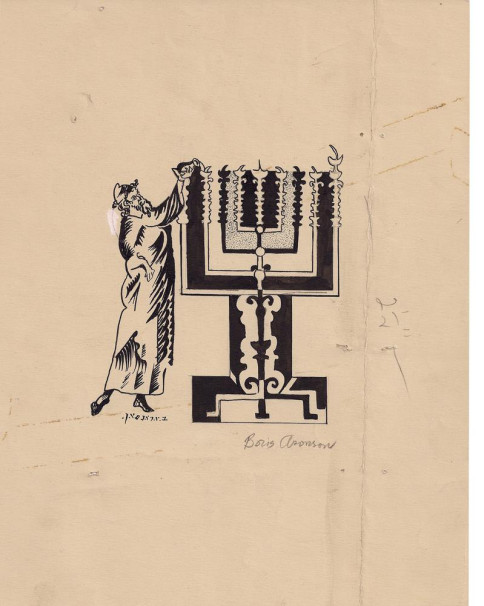
Sans titre,1917-1919 Encre de chine et gouache sur papier 26.5 x 21 cm
-
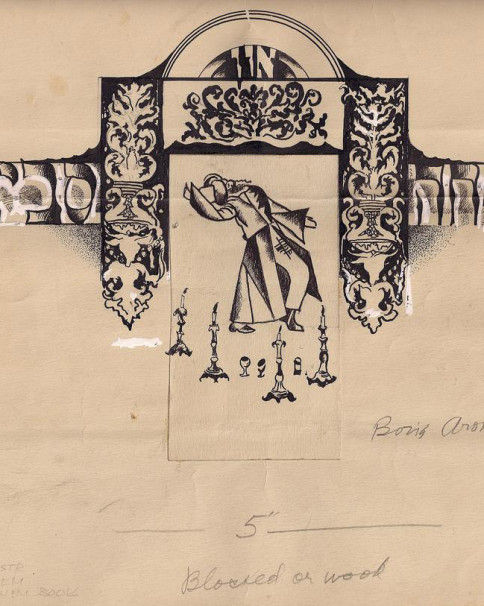
Sans titre, 1917-1919 Encre de chine et gouache sur papier 22 x 26.2 cm
-
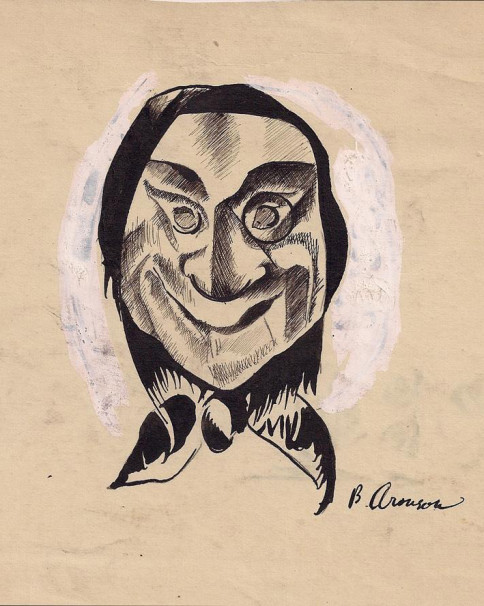
Sans titre (recto), 1917-1919 Encre de chine et gouache sur papier 14.5 x 16.5 cm
-
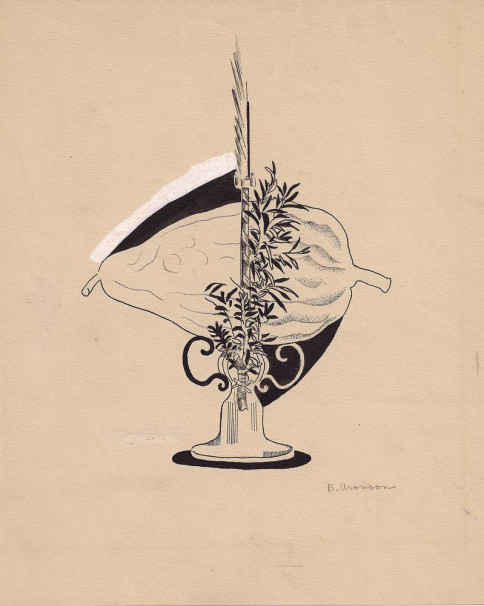
Sans titre, 1917-1919 Encre de chine et gouache sur papier 22.5 x 18.7 cm
-

Sans titre, 1917-1919 Carbone et encre de chine sur papier 22,5 x 23,5 cm
-
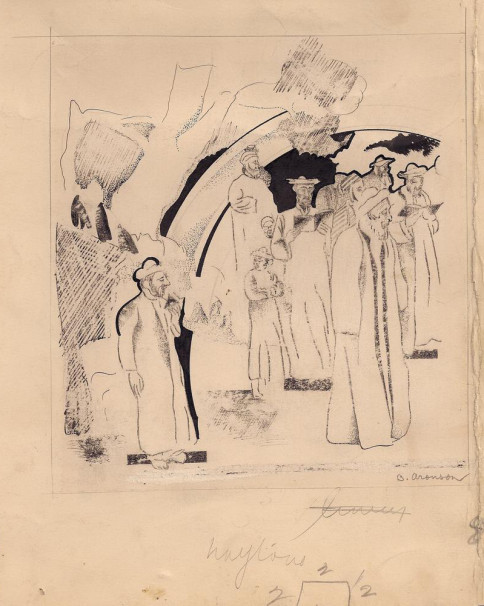
1917-1919 Encre de chine sur papier 24.1 x 19.8 cm
-
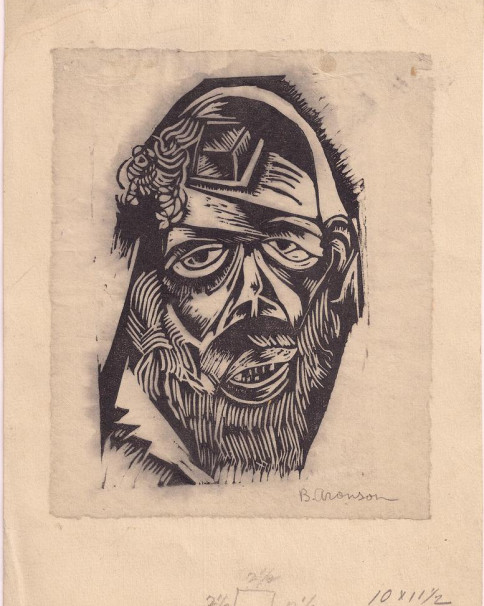
Sans titre, 1917-1919 Bois gravé sur papier 24.1 x 19.8 cm
-
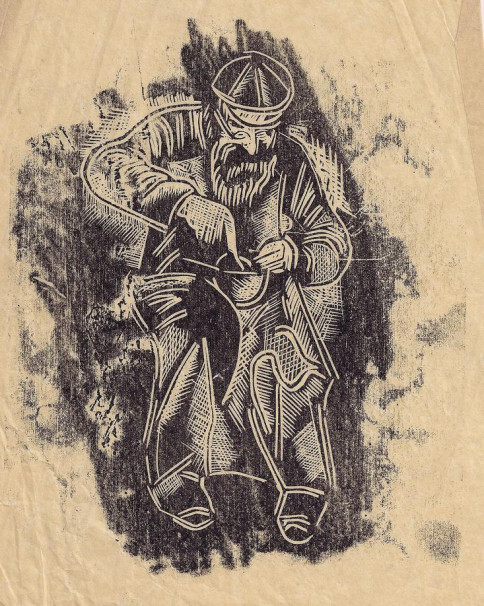
Sans titre, 1917-1919 Bois gravé sur papier 20.5 x 15.5 cm
-
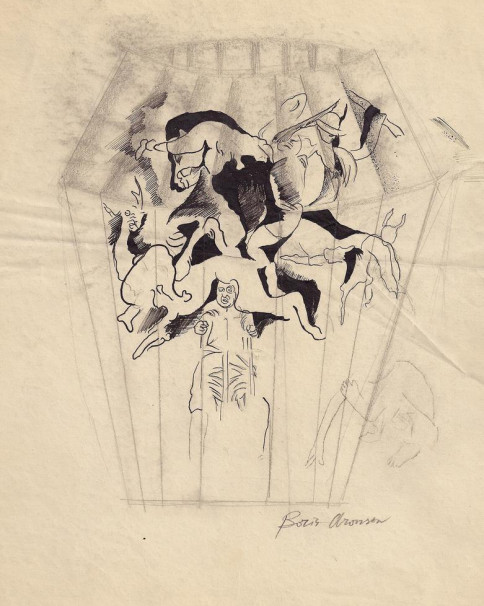
Sans titre, 1924-25 Encre de Chine et mine de graphite sur papier 25.8 x 20.2 cm
-
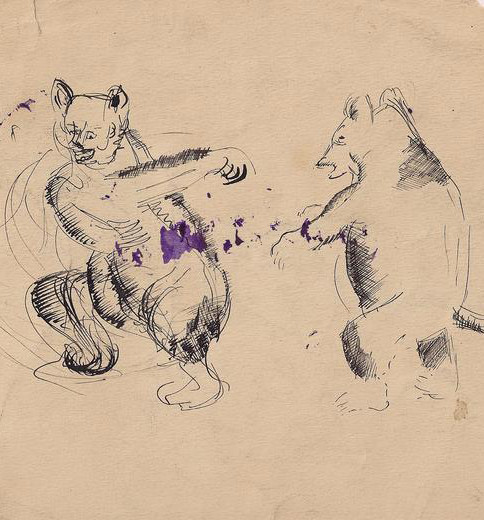
Sans titre verso, 1917-1919 Encre de Chine et gouache sur papier 15,2 x 28,9 cm (feuille)
-
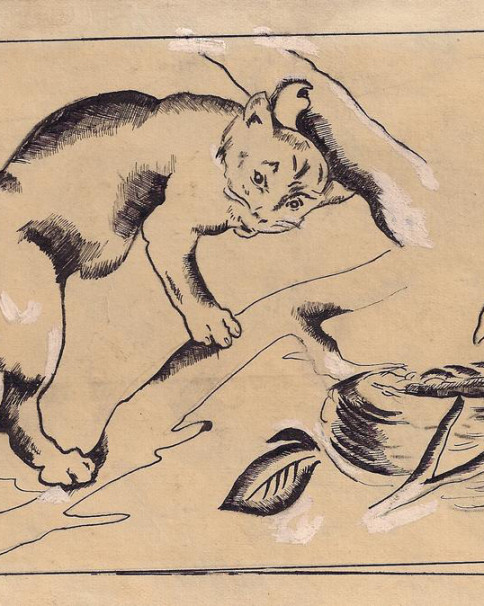
Sans titre, 1917-1919 Encre de Chine et gouache sur papier 13 x 19 cm
-
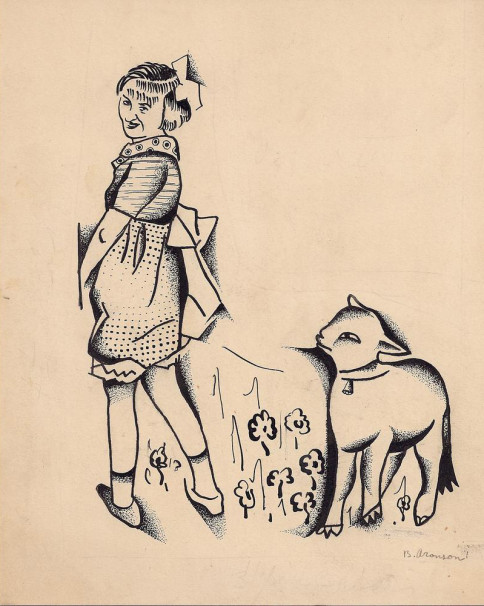
Sans titre, 1917-1919 Encre de Chine sur papier 18.6 x 14.9 cm
-

Sans titre, 1917-1919 Encre de Chine sur papier 12.6 x 17.6 cm
-
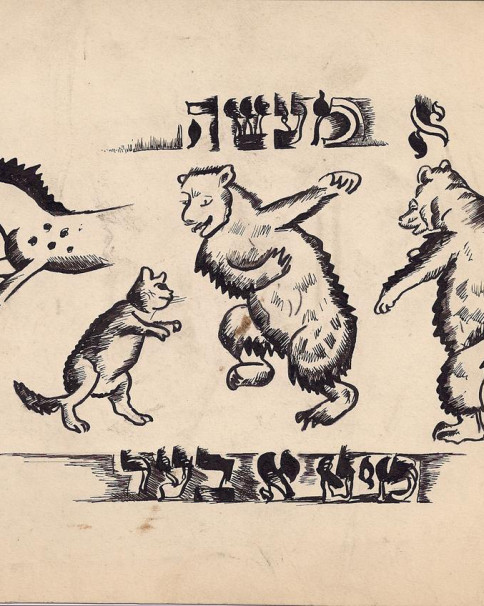
Sans titre (illustration pour le conte de l'ours),1917-1919 Encre de Chine sur papier 15.5 x 18 cm
-
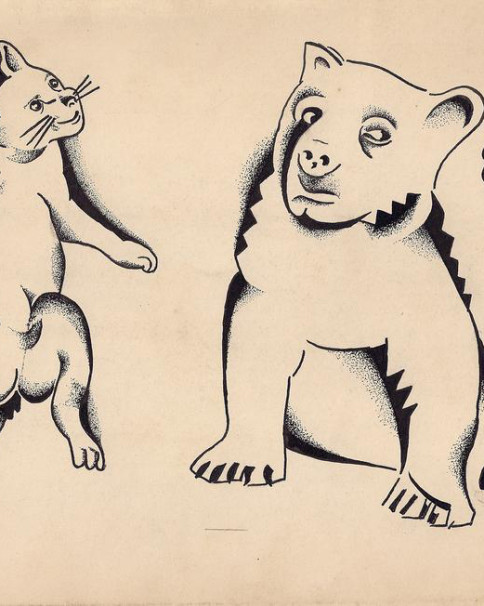
Sans titre, 1917-1919 Encre de Chine sur papier 17.9 x 28.5 cm
-
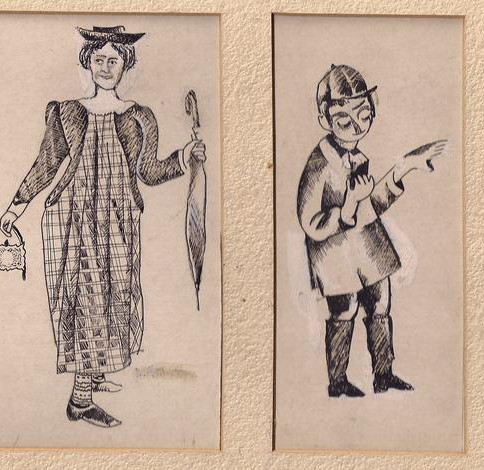
Sans titre et bis, 1917-1919 Encre de Chine sur papier 16,4 x 28 cm (feuille)
-
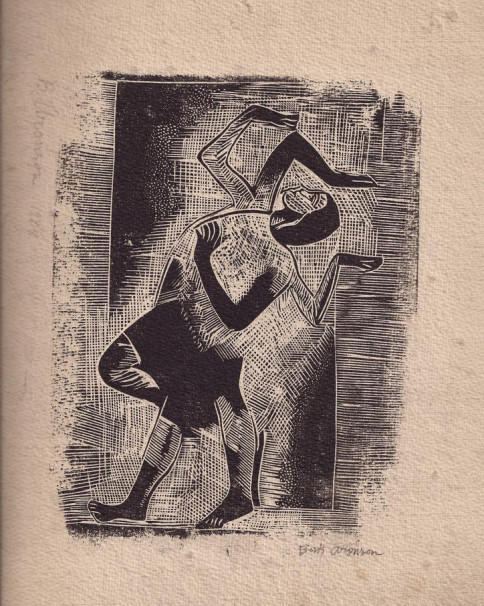
Sans titre, 1917-1919 Bois gravé sur papier 22.5 x 30.3 cm
-
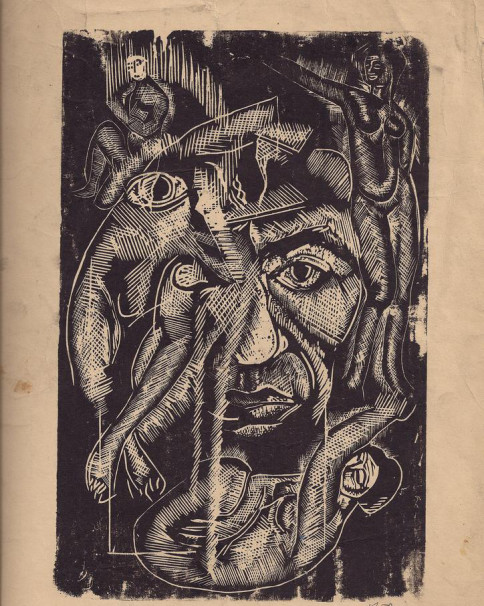
Sans titre, 1917-1919 Bois gravé sur papier 32 x 23 cm
-
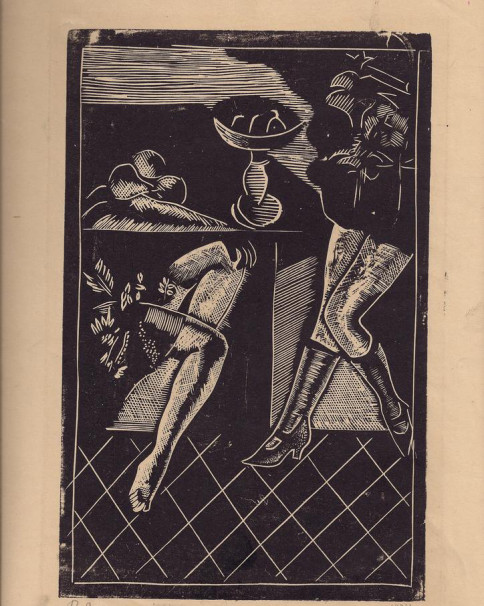
Sans titre, 1924 Bois gravé sur papier 31 x 23 cm
-
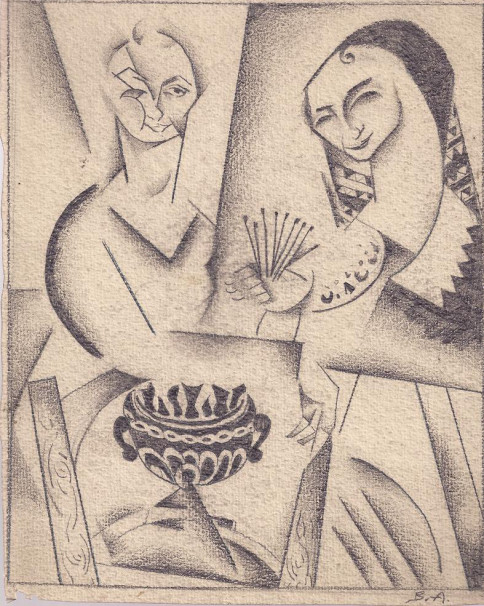
Sans titre, 1917-1919 Mine de graphite sur papier 31 x 23 cm
-
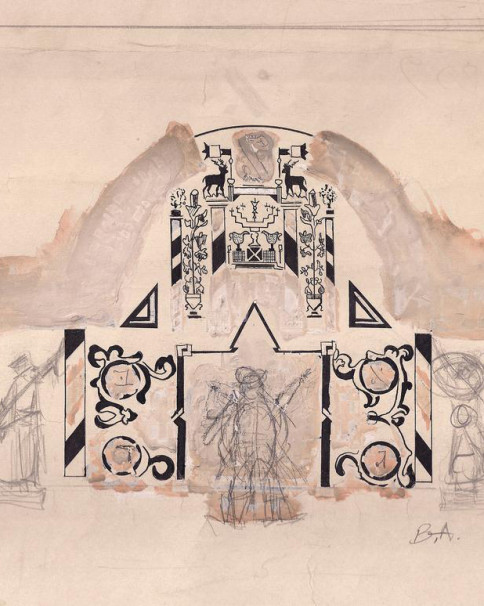
Sans titre, 1917-1919 Mine de graphite, encre de Chine et gouache sur papier 21.7 x 27.2 cm
-
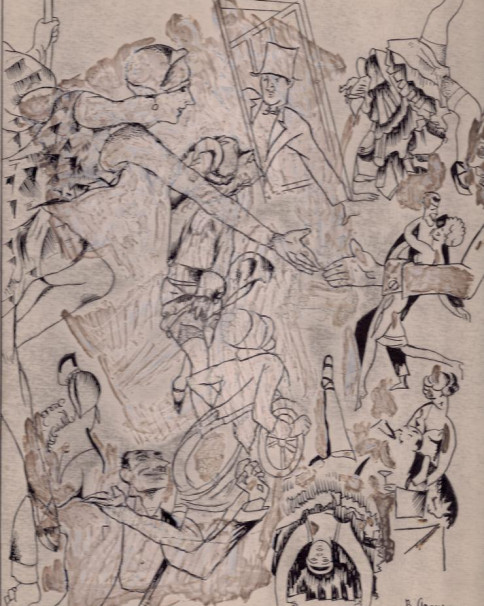
Sans titre, 1917-1919 Encre de Chine sur papier 25 x 33 cm
-
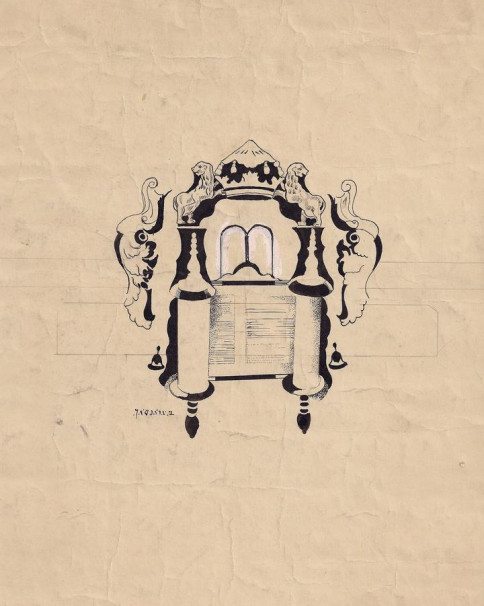
Sans titre, 1917-1919 Encre de chine et plomb de blanc sur papier 29 x 20.5 cm
-
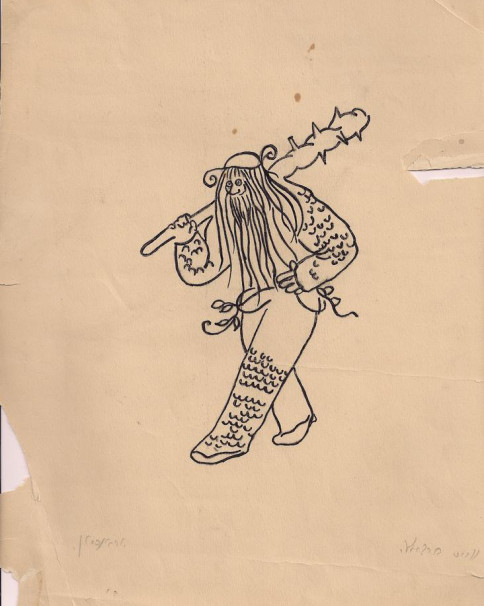
Sans titre, 1917-1919 Encre de chine sur papier 29.2 x 22.6 cm
-
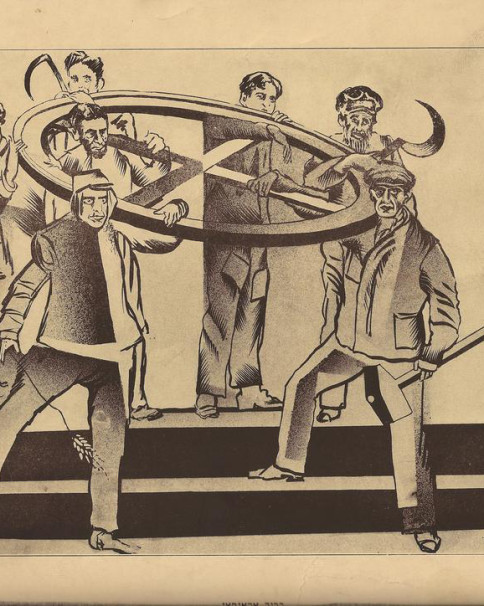
Sans titre, 1917-1919 Reproduction 22.6 x 29.6 cm
-
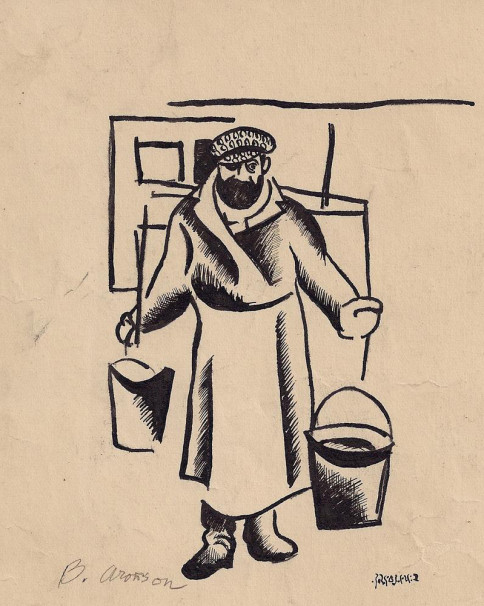
Sans titre, 1917-1919 Encre de Chine sur papier 15,3 x 14,7 cm
-
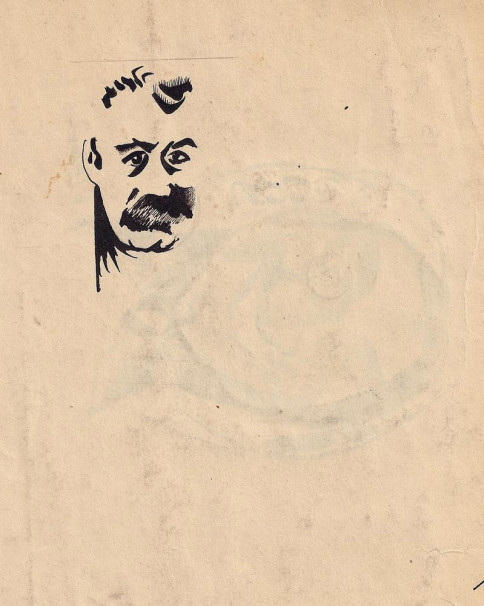
Sans titre versoVoir recto.
-
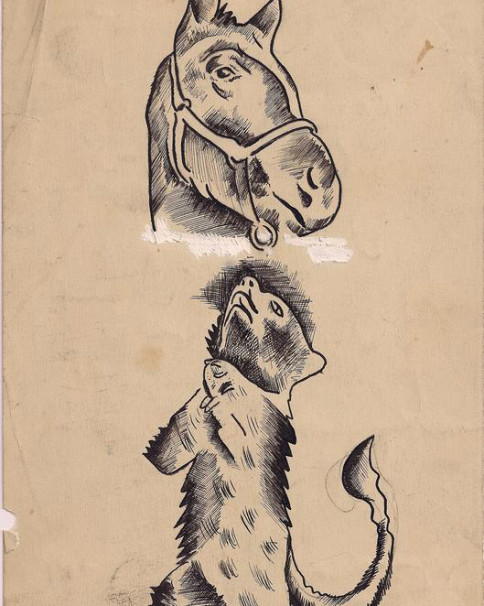
Sans titre rectoEncre de Chine et gouache sur papier 15,2 x 28,9 cm (feuille)
-
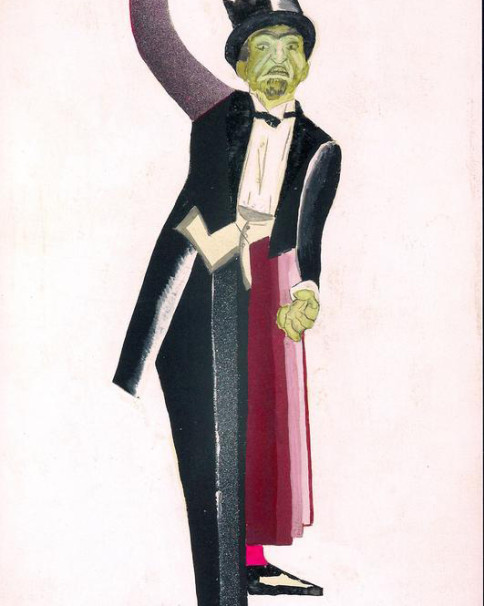
Project for the costume of the devil in day and night, for Unzer Teater, 1924 Gouache on card 16 x 8.2 in
-
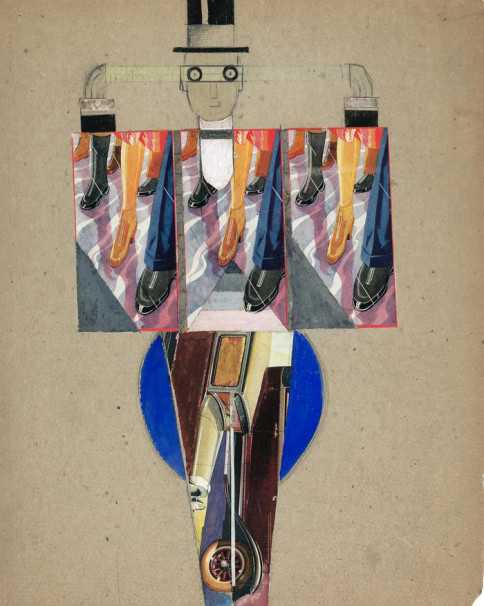
Etude pour un costume,1920 Collage, gouache et crayon sur carton 50 x 37 cm
-
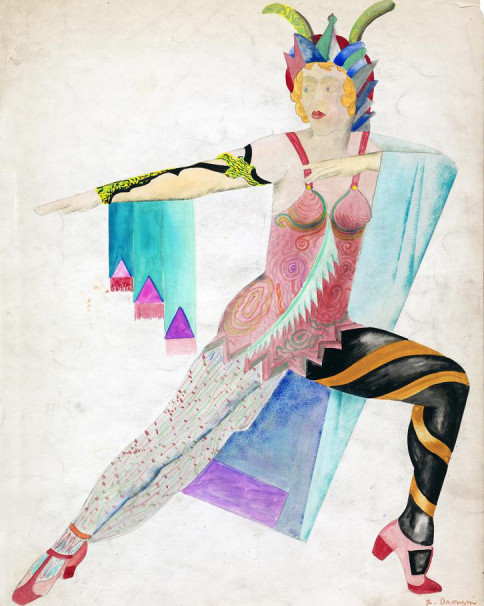
Study for a costume - Lilith, 1920 Gouache and pencil on card 20.3 x 14.8 in
-
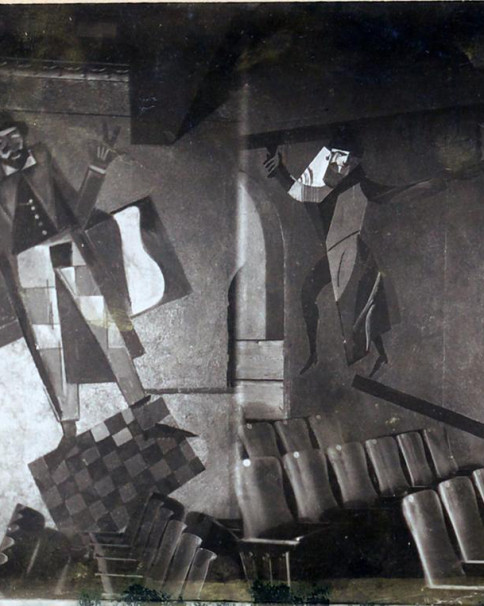
Photo des peintures murales "Unzer Teater",1925 Tirage gélatino-argentique 12 x 17 cm
-
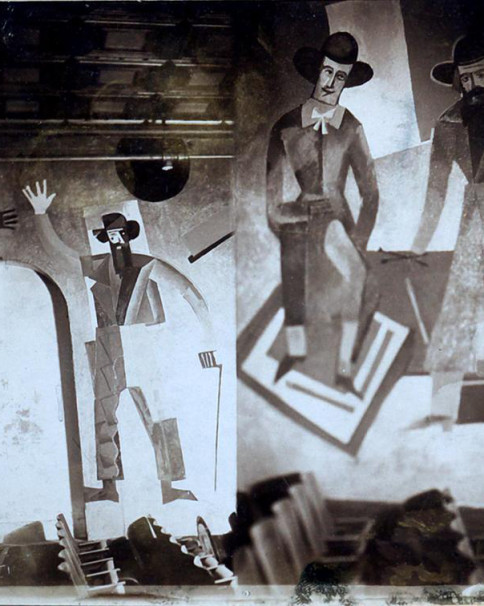
Photo des peintures murales,1925 Tirage gélatino-argentique d’époque 16 x 21 cm
-
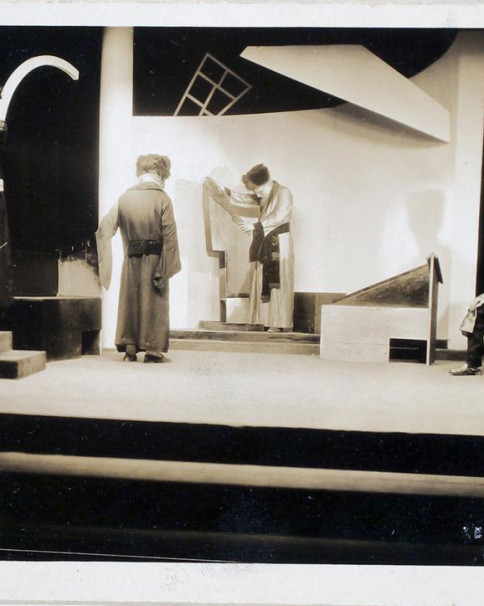
Photo de la piece - day and night,1924 Tirage gélatino-argentique d’époque12,5 x 17,7, 13,8 x 18 cm
-
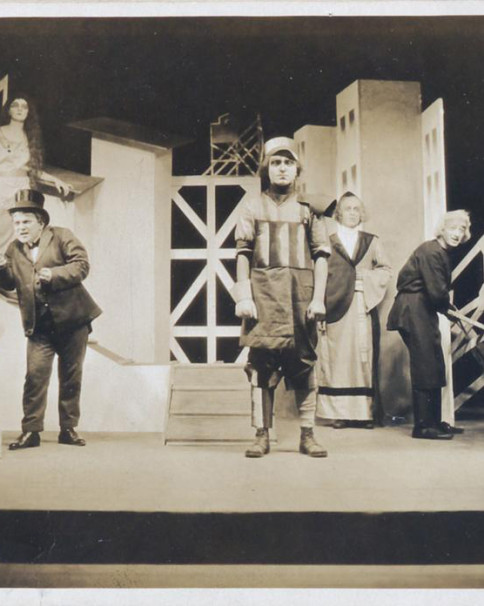
Photo de la piece - day and night,1925 Tirage gélatino-argentique d’époque 12,5 x 17,7 cm
-
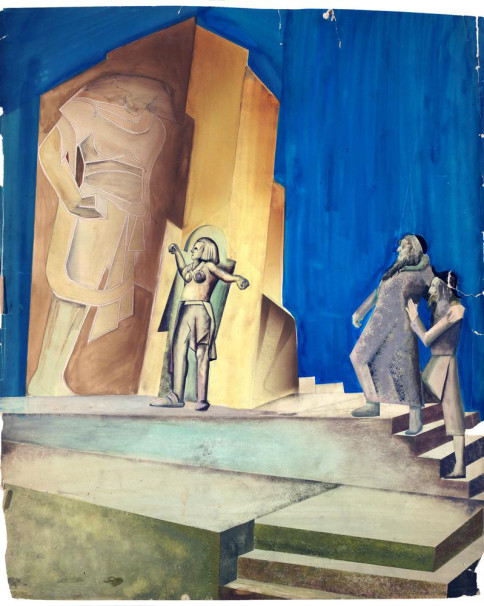
Décor de scène - GolemGouache sur carton 68 x 56 cm
-
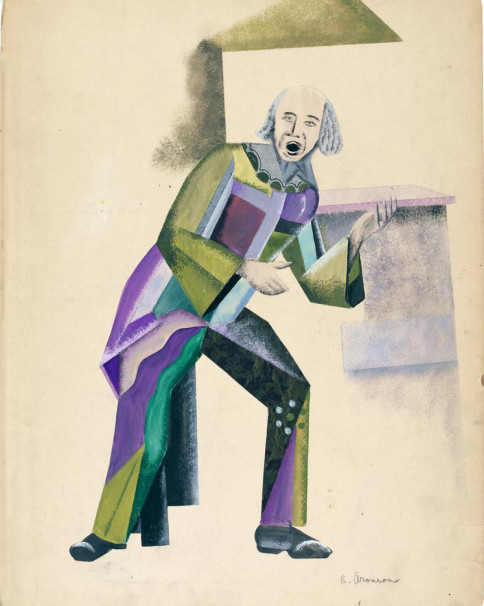
Study for a costume - Tragedy of Nothing, 1927 Gouache on card 19.5 x 14.2 in
-
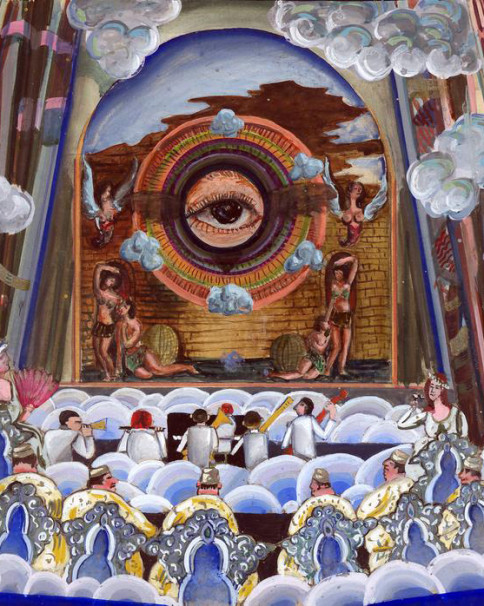
Stage project for Angels on Earth, 1929 Gouache on paper 33 x 46 cm
-
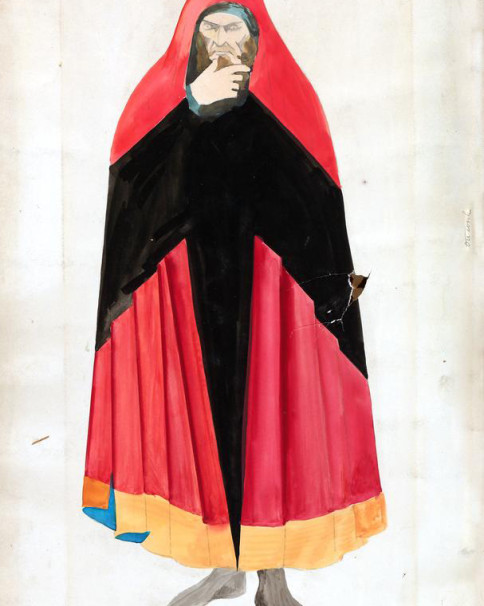
Study for a costume – Golem, 1931 Gouache and pencil on paper 22 x 14.2 in
-
